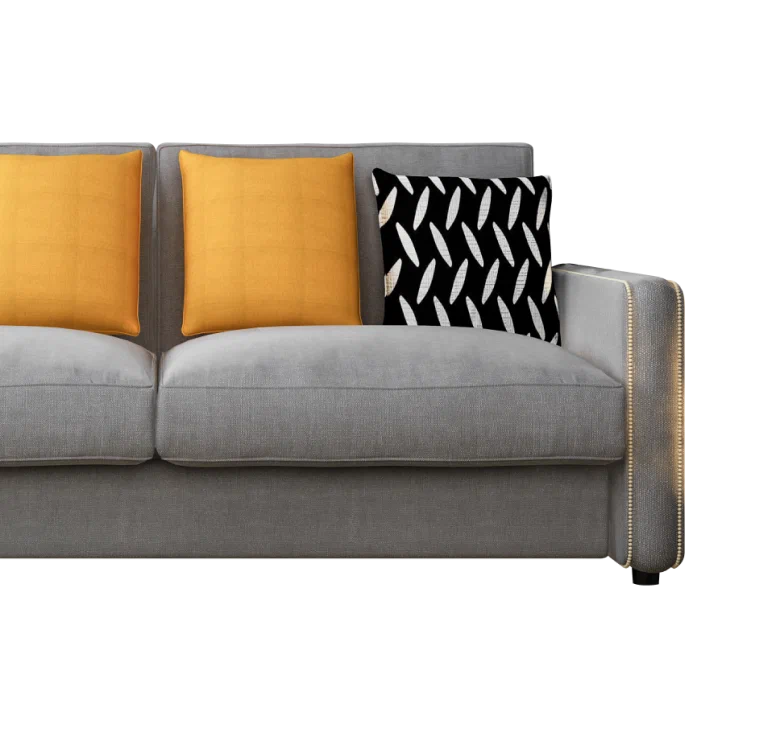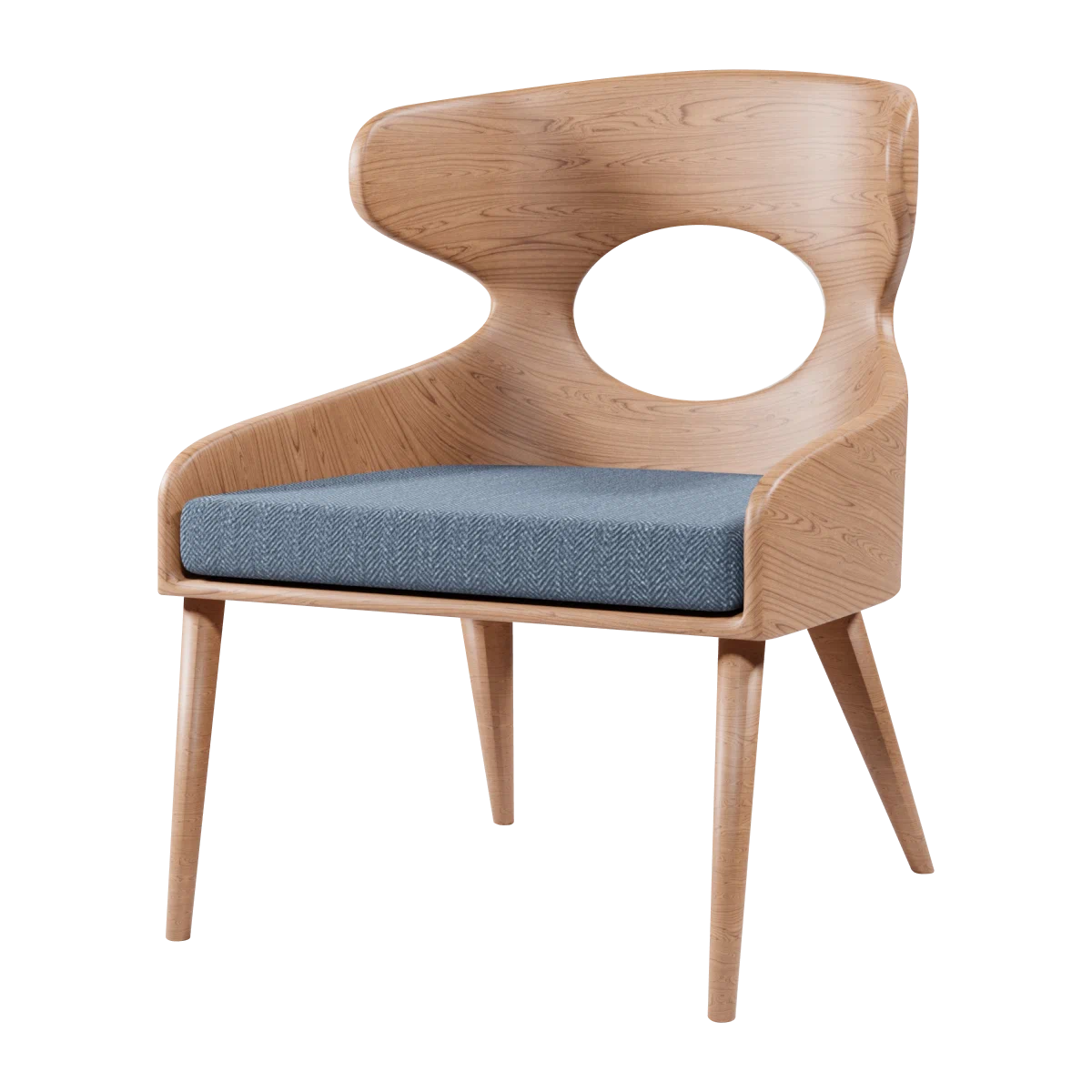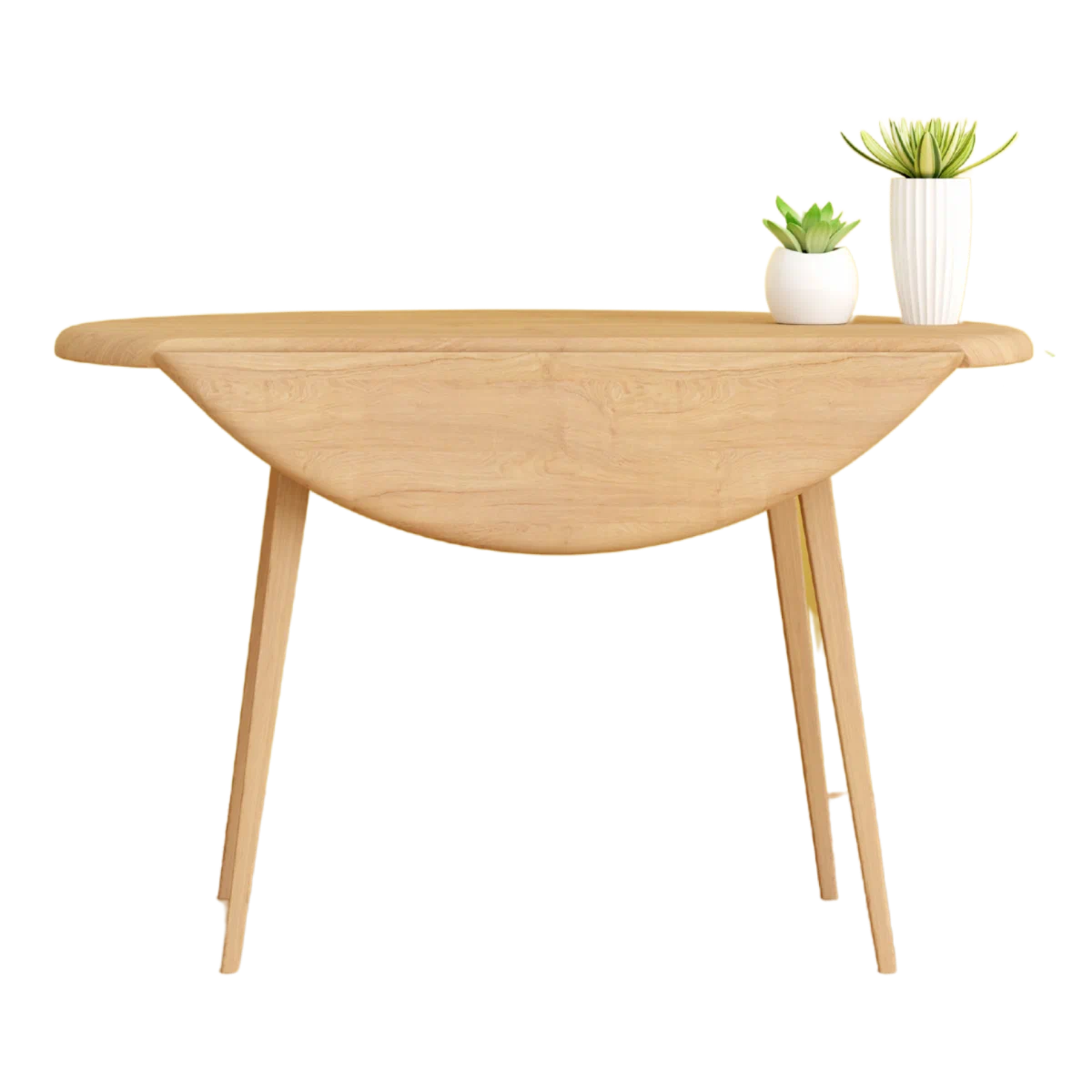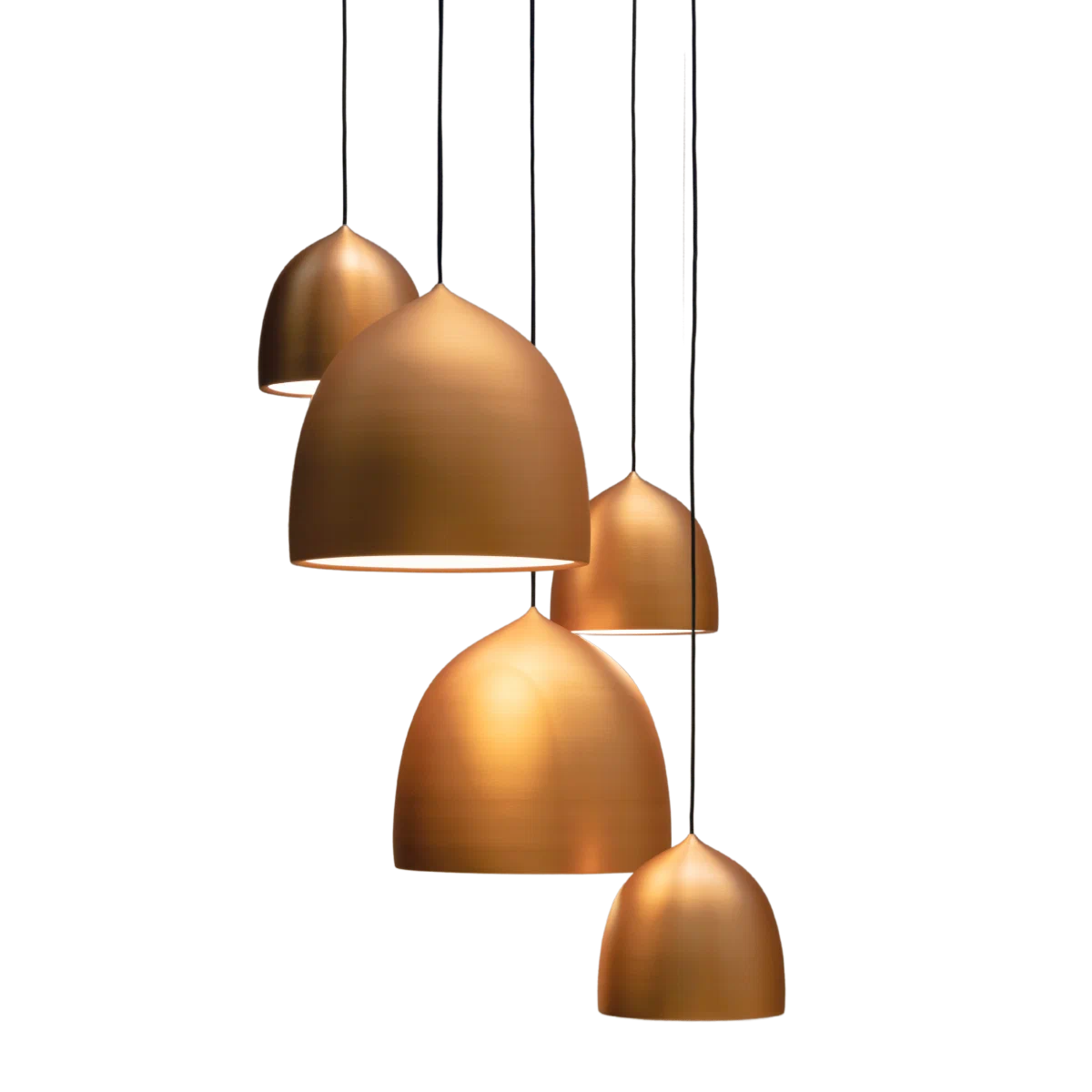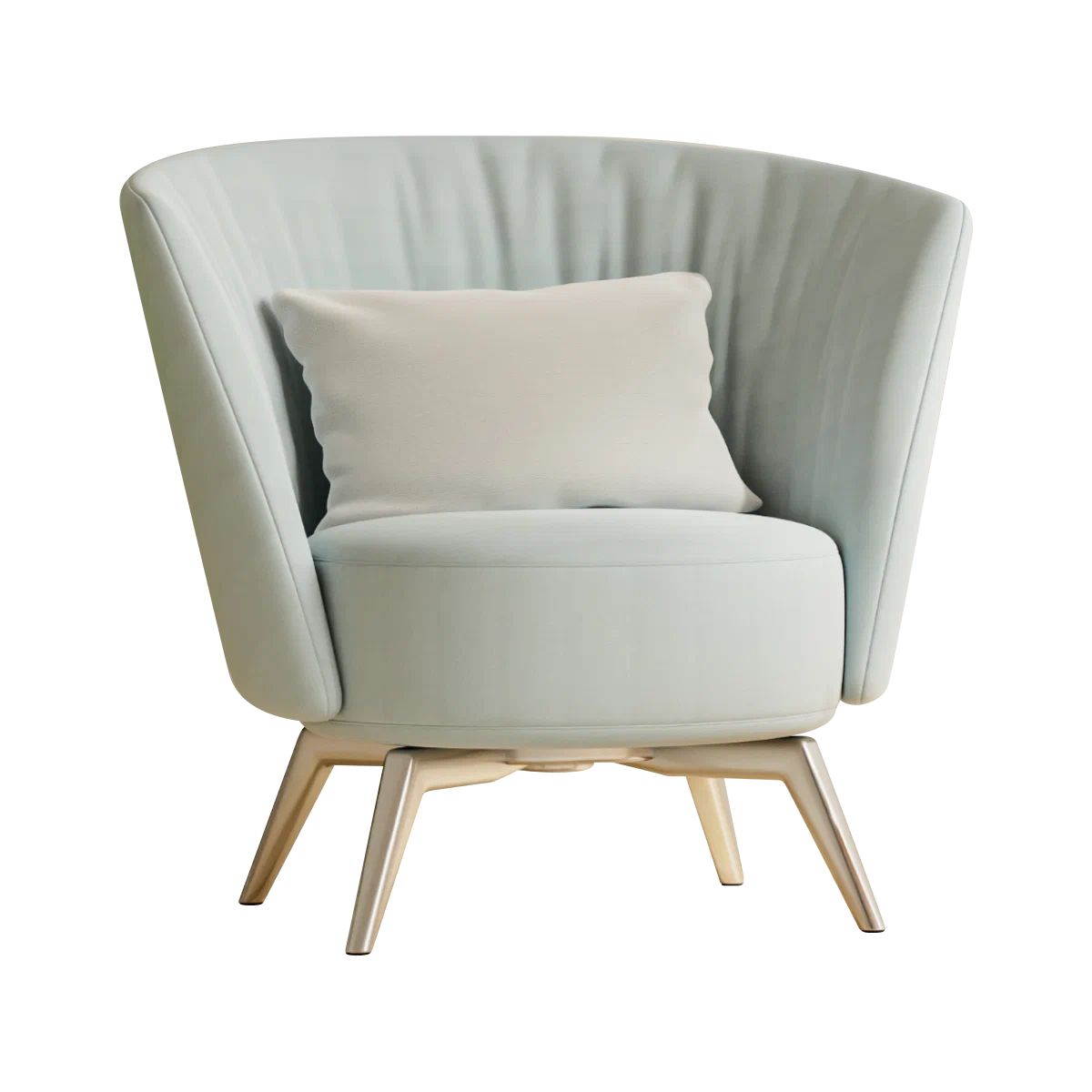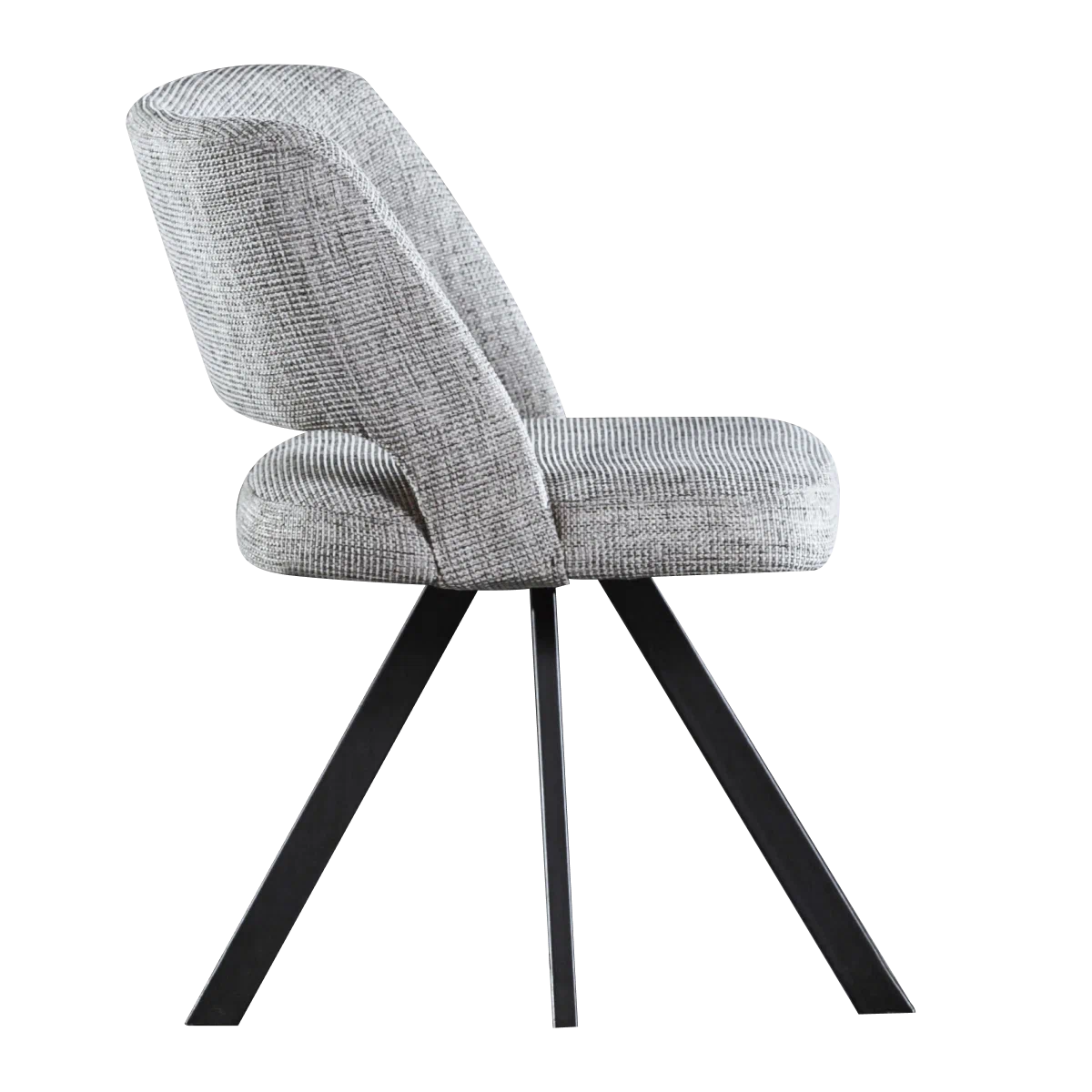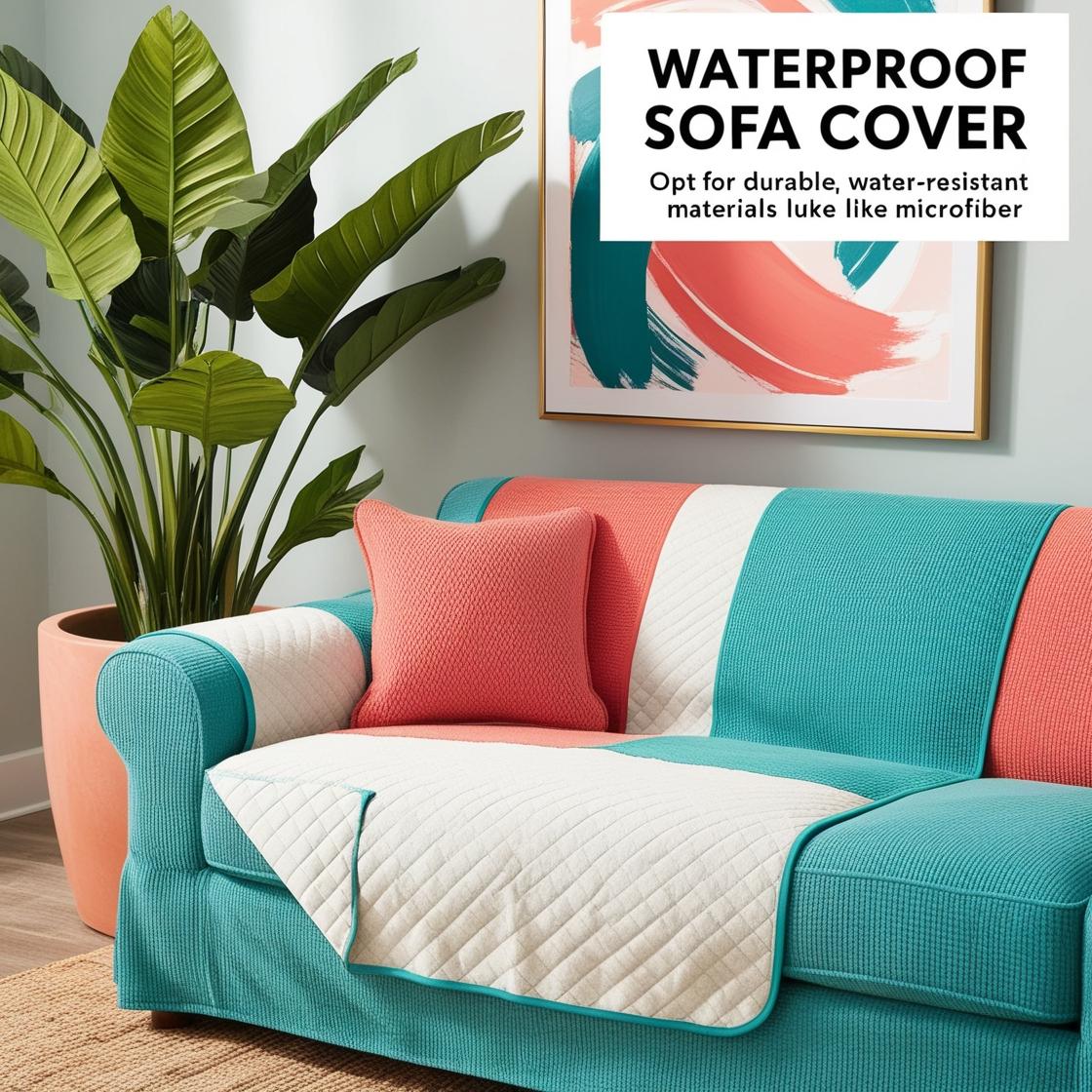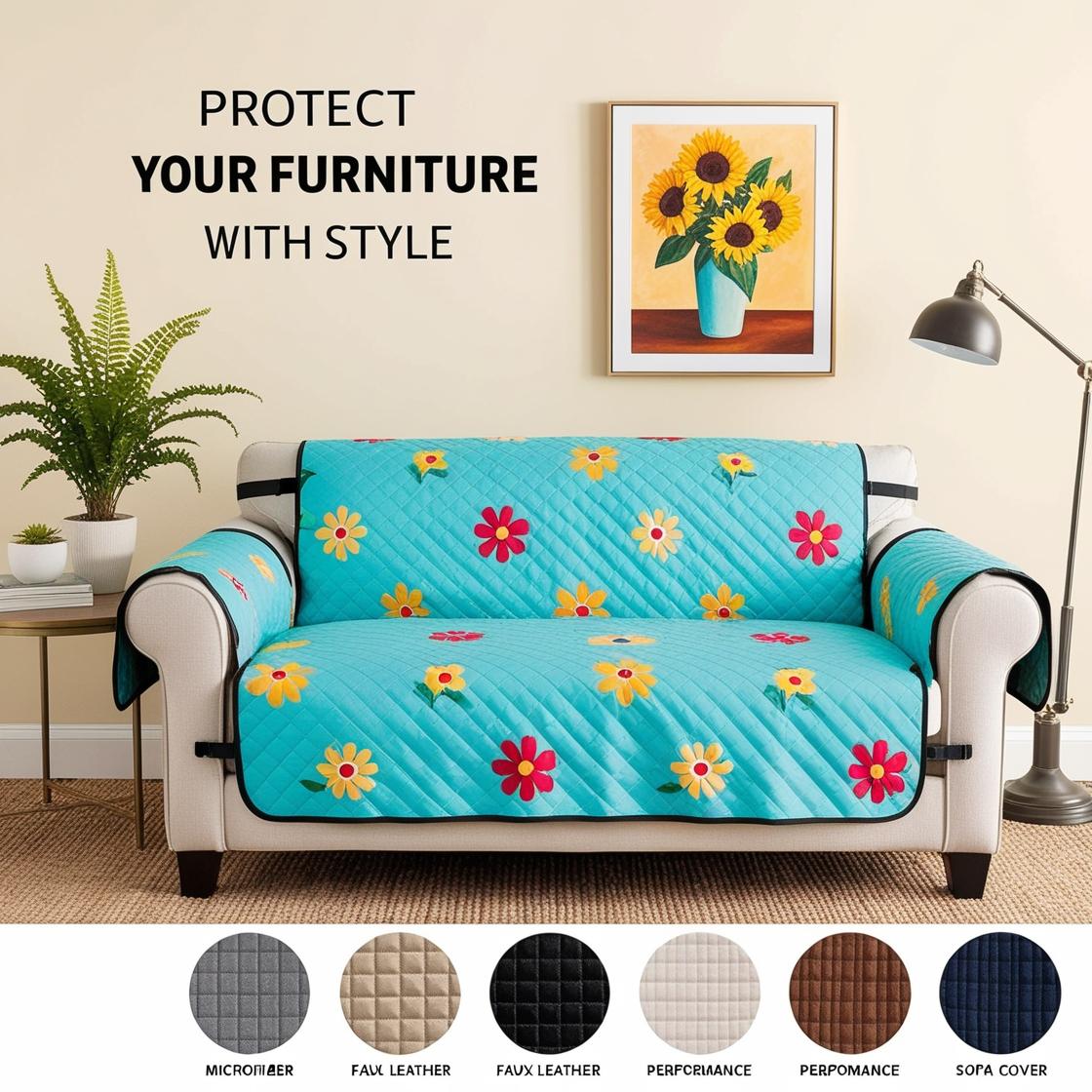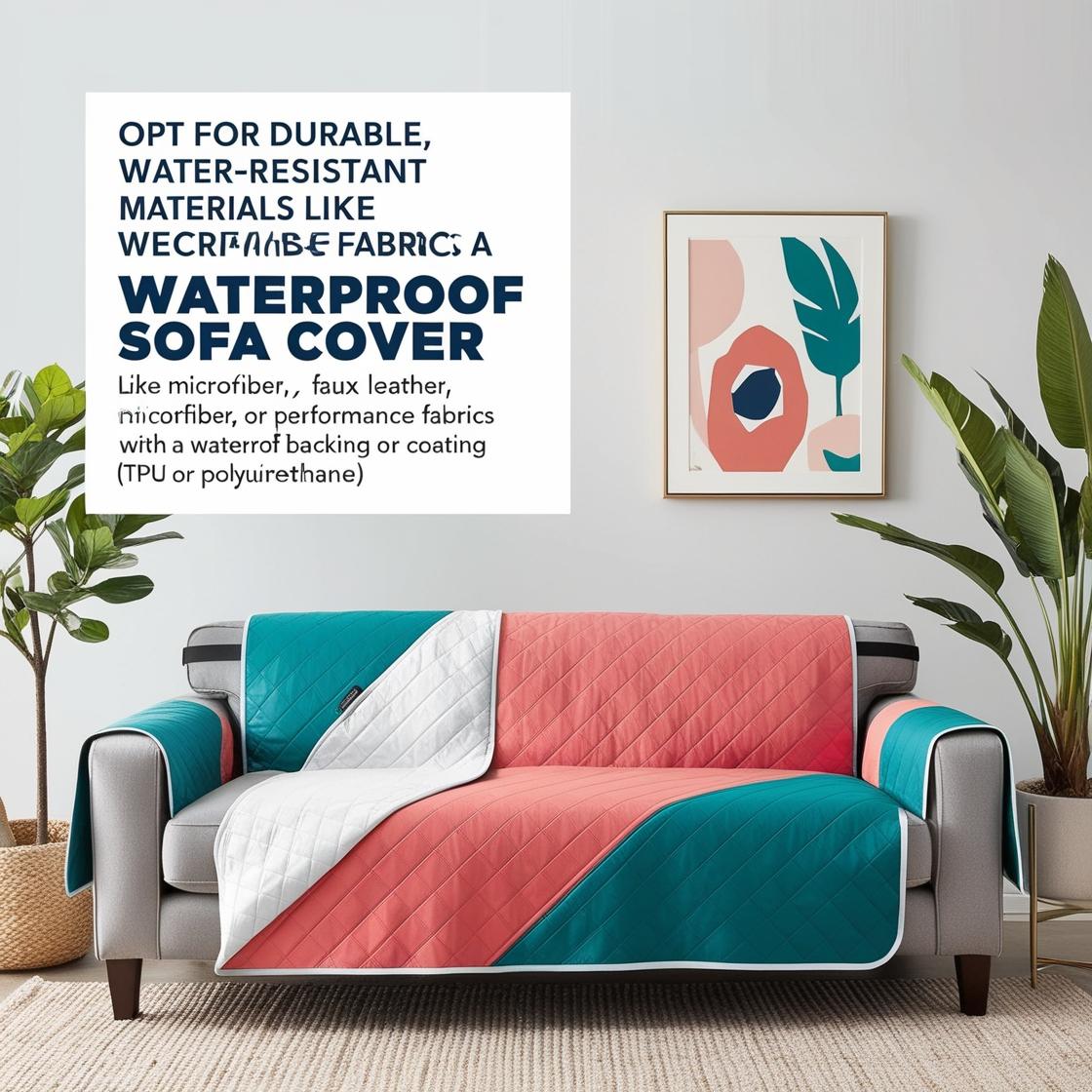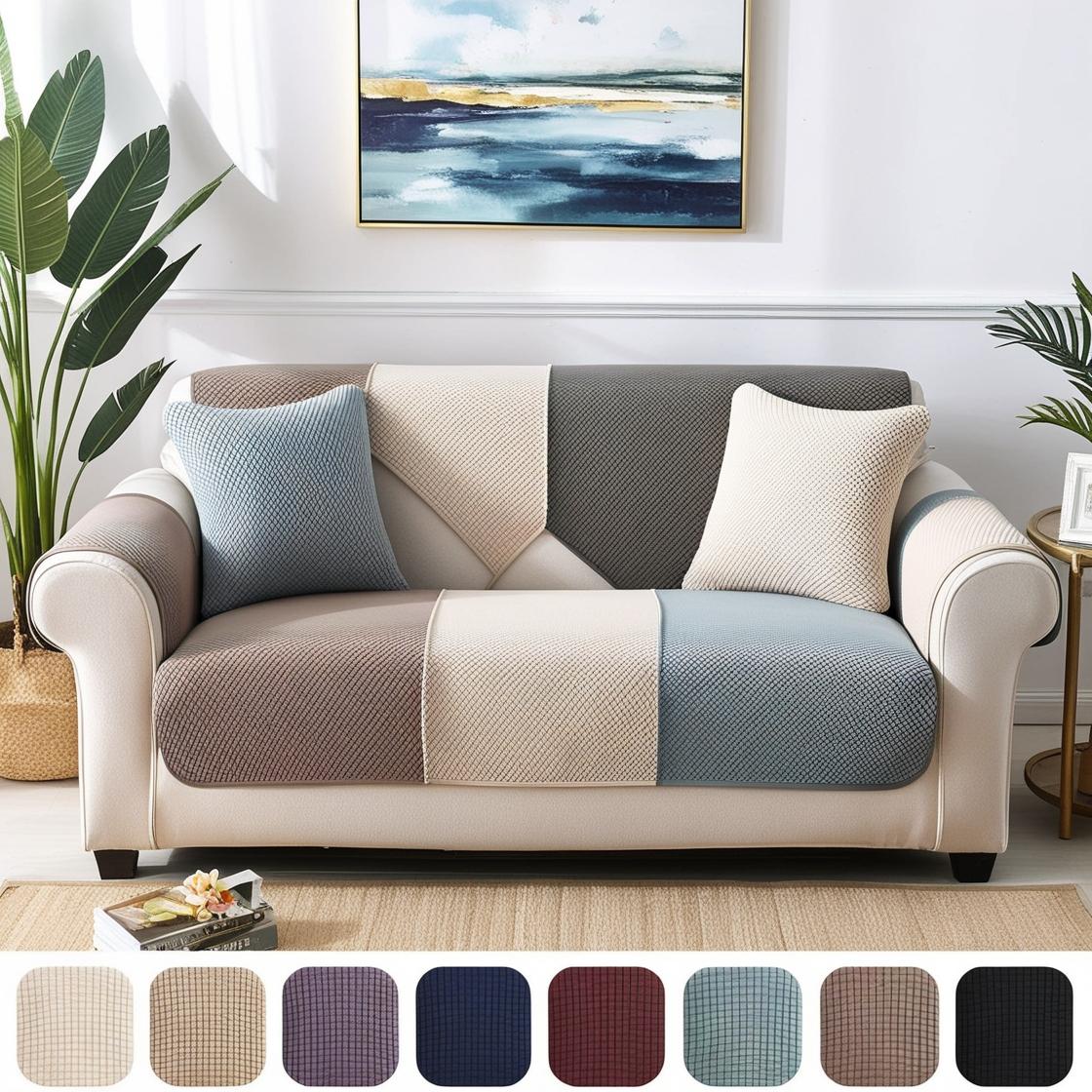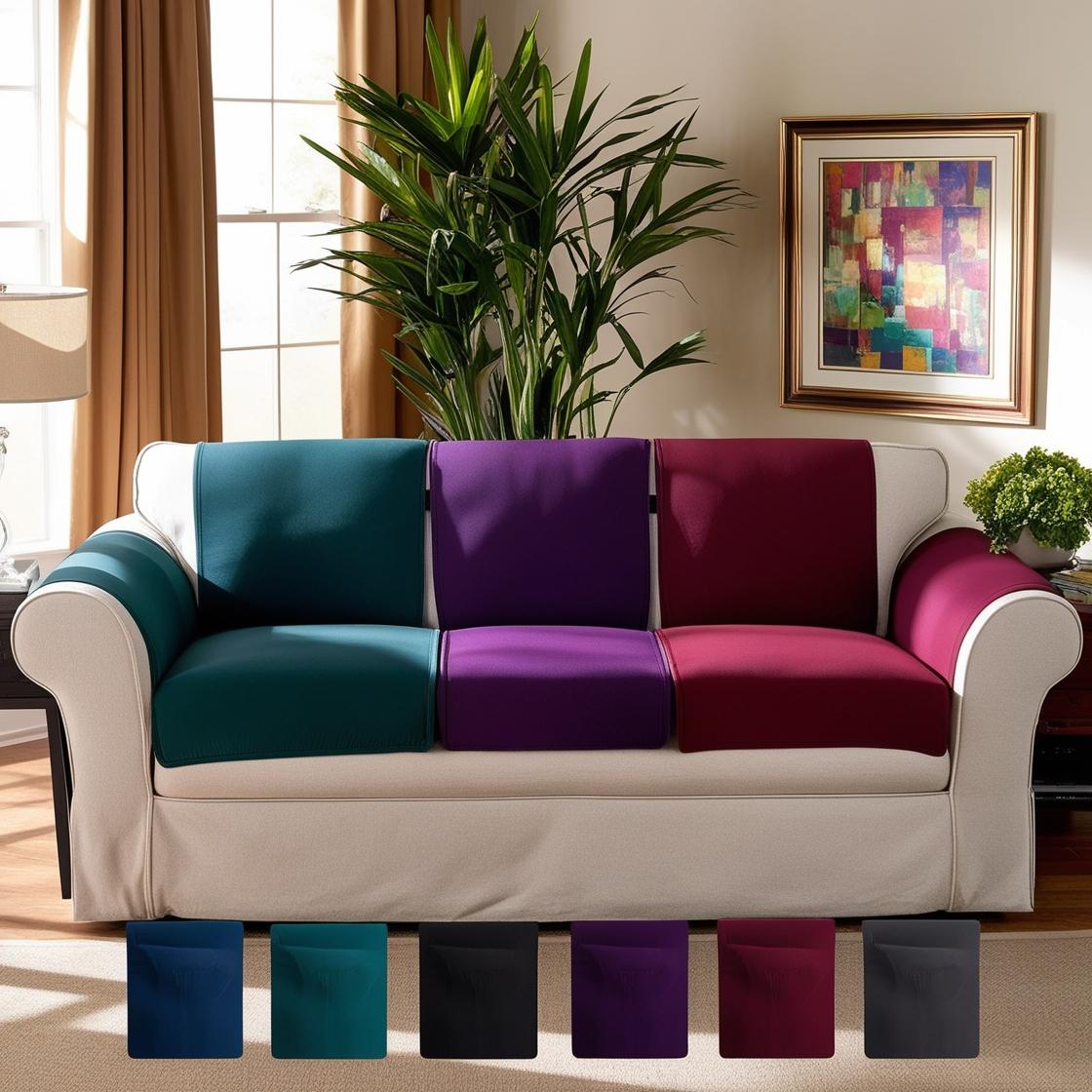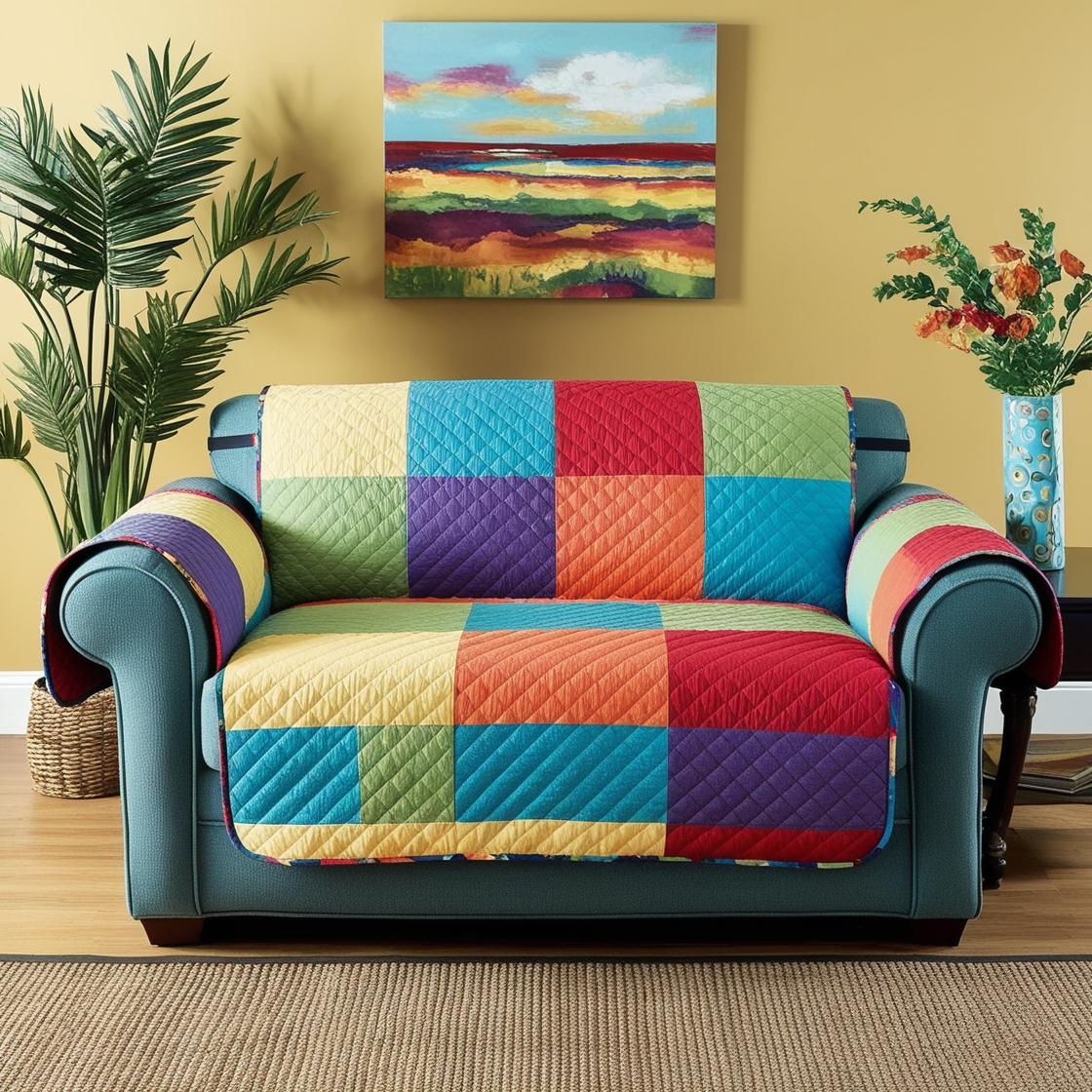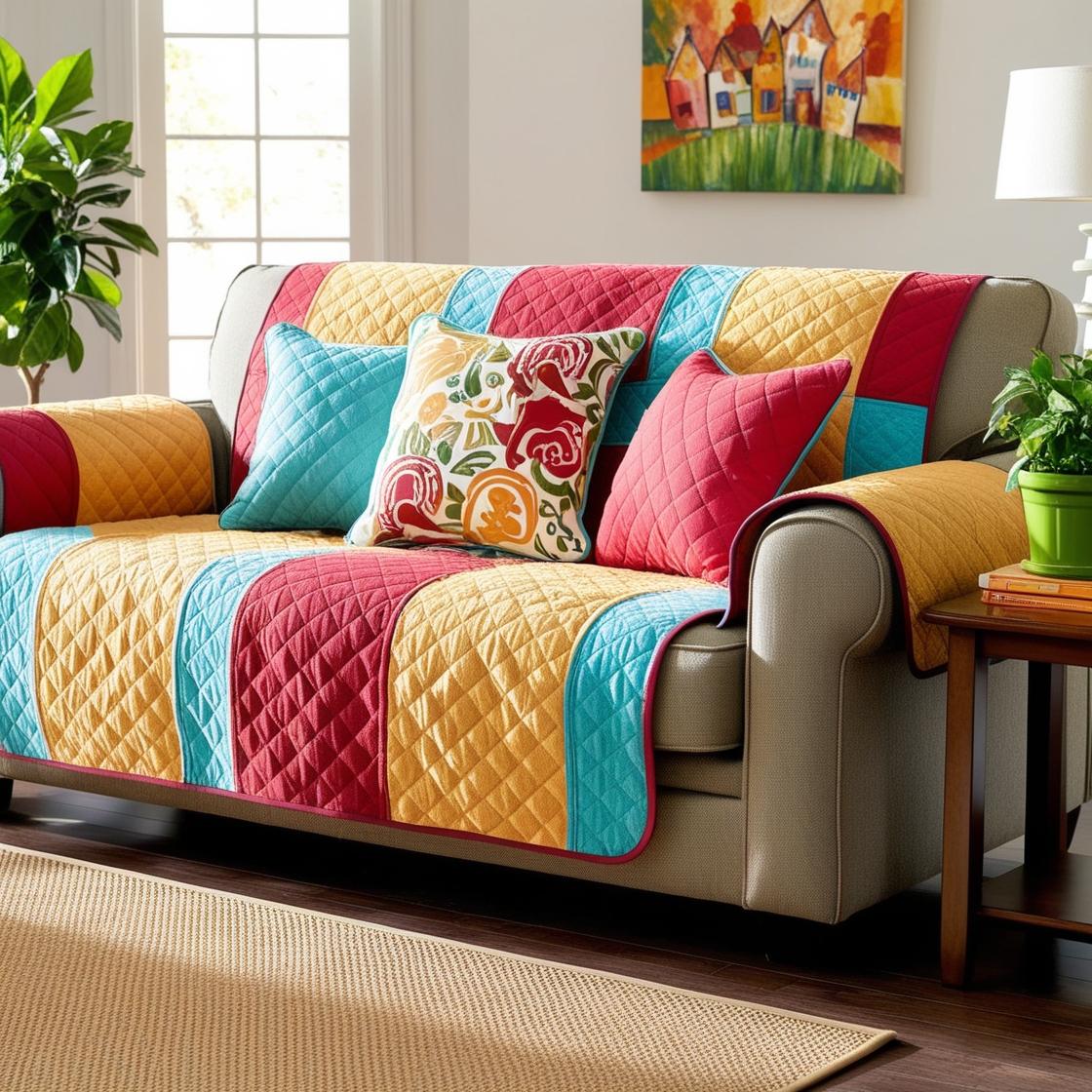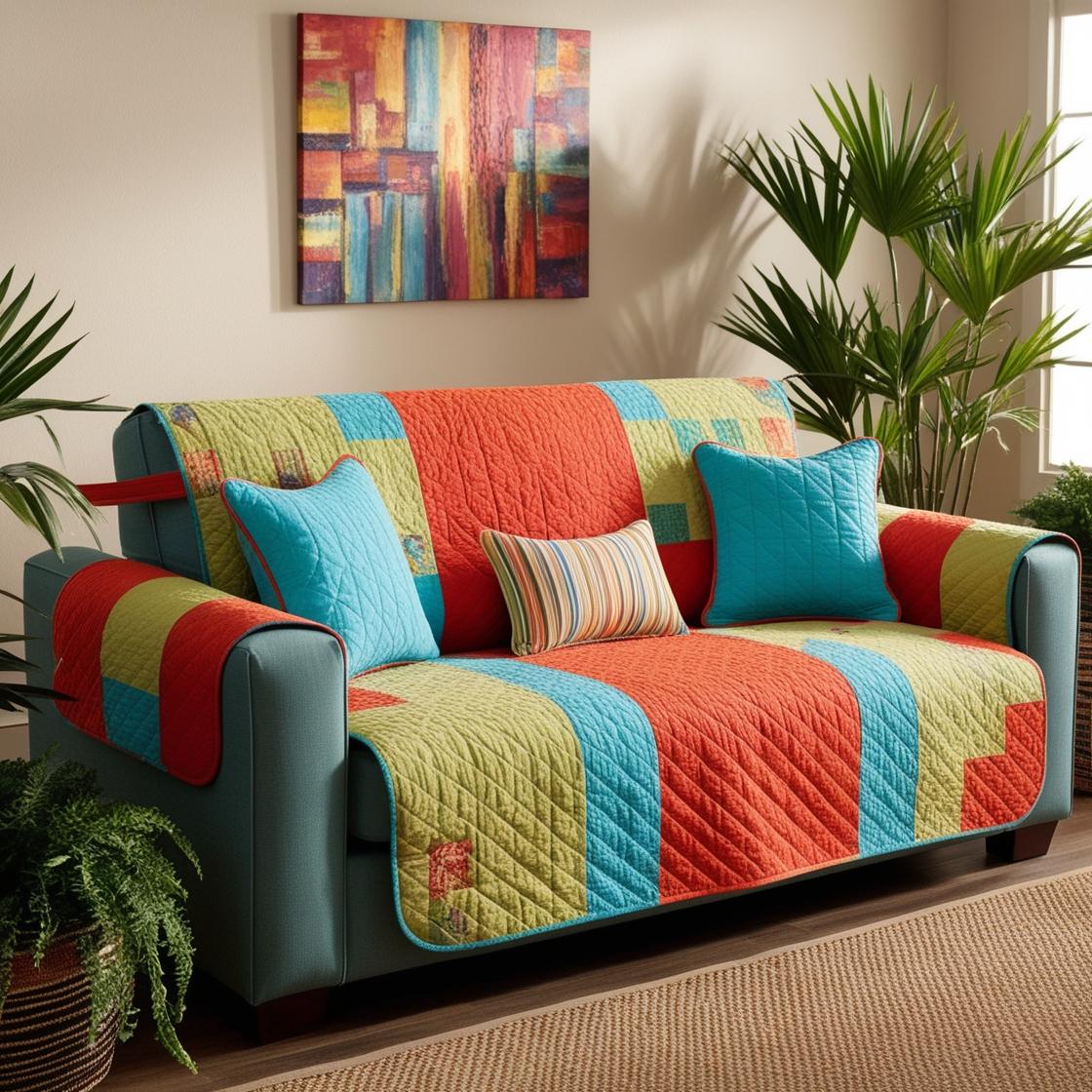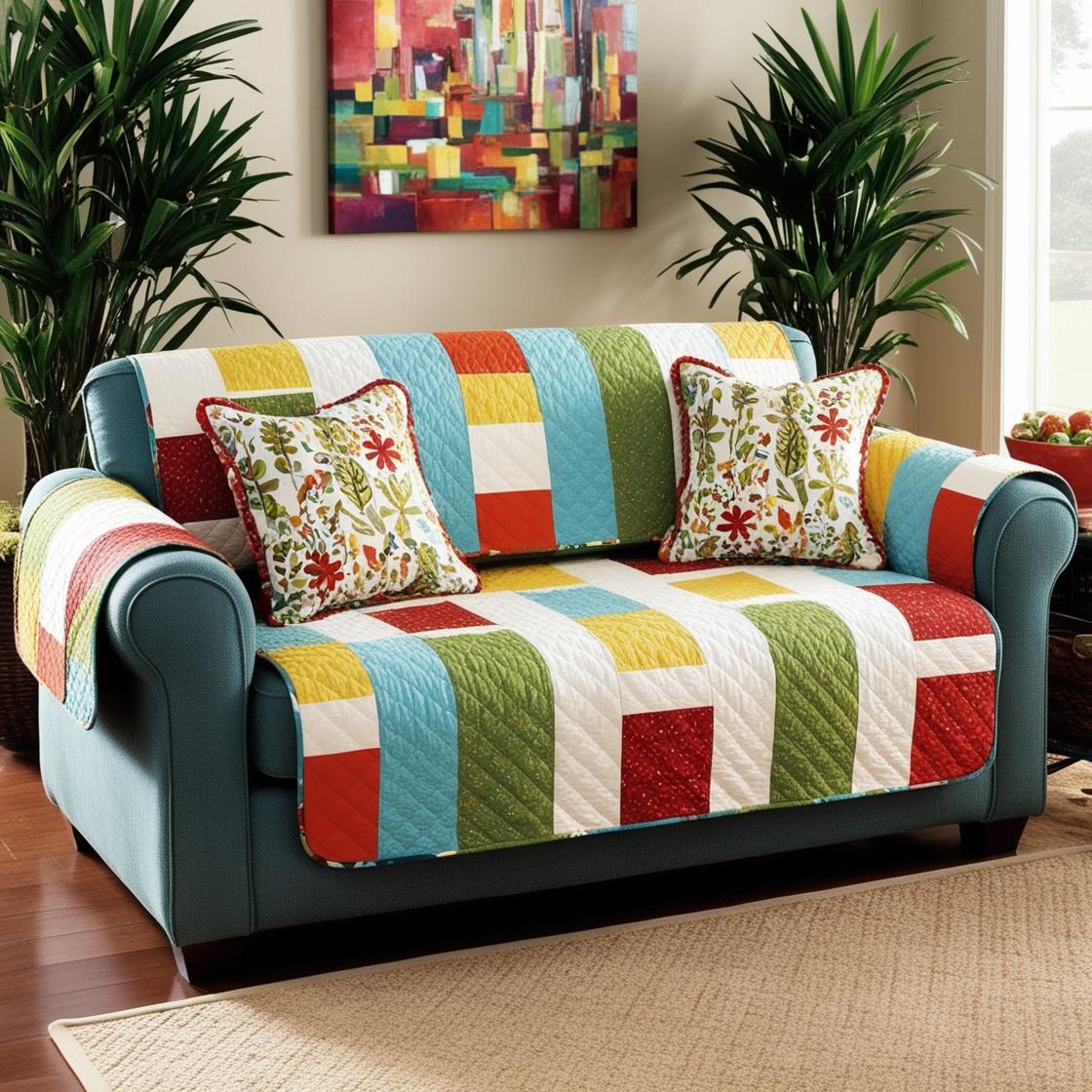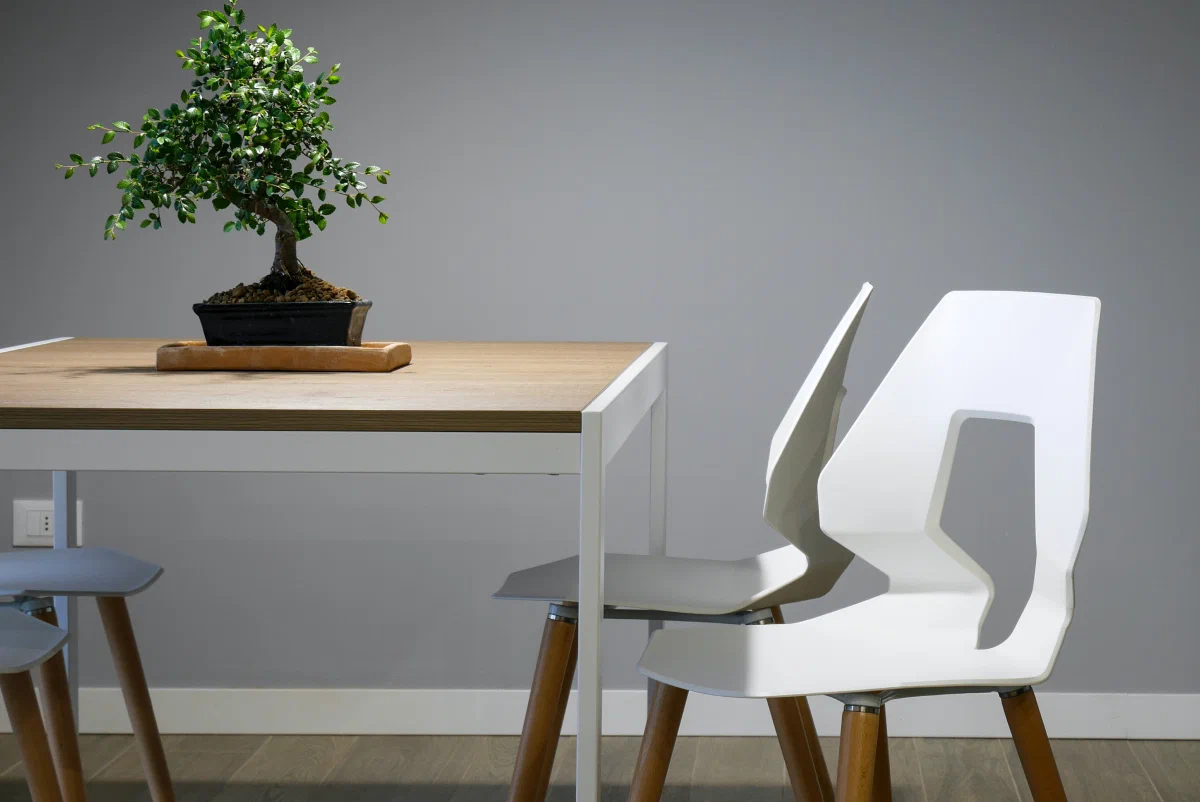
Trending Now: The best Recliner Covers in 2025, Most Reviewed one
January 6, 2025
Top 8 Loveseats Under $100: How to Find the perfect Loveseat for small space
February 6, 2025
Trending Now: The best Recliner Covers in 2025, Most Reviewed one
January 6, 2025
Top 8 Loveseats Under $100: How to Find the perfect Loveseat for small space
February 6, 2025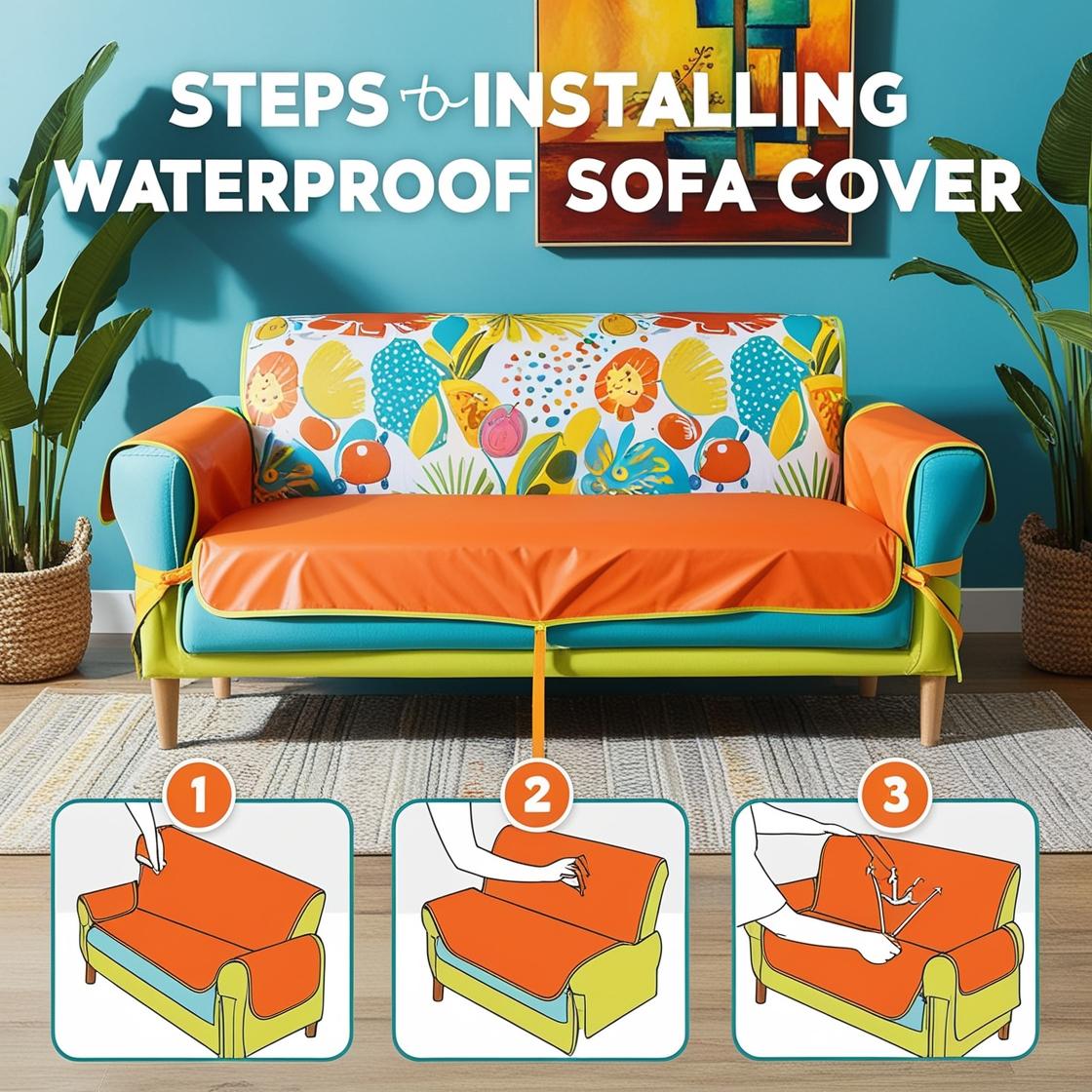
How to Install a Waterproof Sofa Cover Like a Pro
A waterproof sofa cover is a smart investment to protect your furniture from spills, stains, pet fur, and everyday wear and tear. But a poorly installed cover can look messy and fail to provide the protection you need. This comprehensive guide will show you how to install a waterproof sofa cover like a pro, with step-by-step instructions, expert tips, and troubleshooting advice.
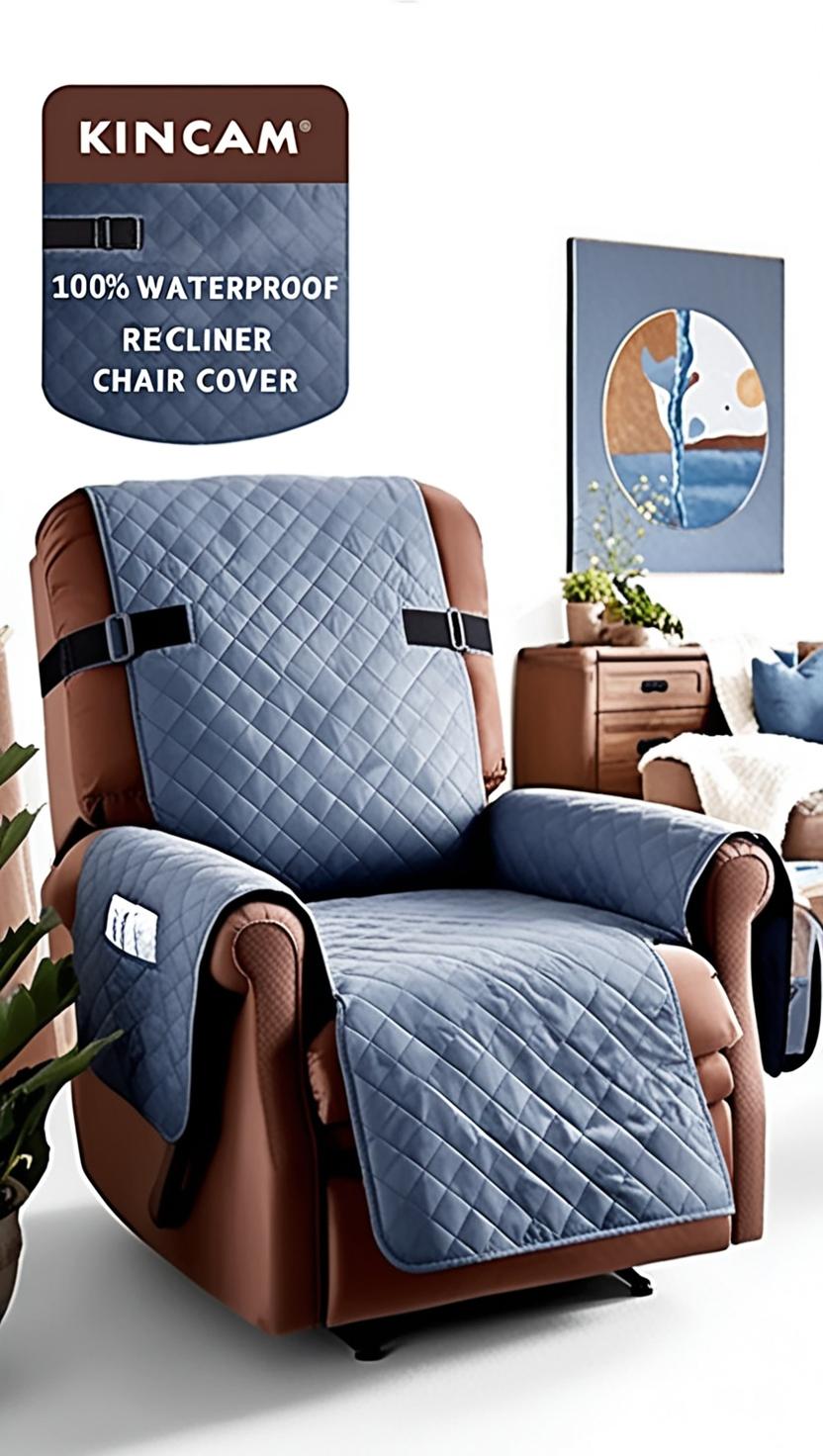
Alright, you've got your brand-new waterproof sofa cover in hand, and you're eager to get that sofa protected. But hold on just a minute! Before you start wrestling with the fabric, there are a few essential steps you need to take to ensure a smooth, successful, and frustration-free installation. Trust me, a little prep work goes a long way. I've learned this the hard way, skipping these steps can lead to a messy, ill-fitting cover. Here's what you need to do before you begin:This guide will show you how to correctly install a waterproof sofa cover to protect your sofa from spills, stains, and wear and tear. A poorly installed cover can bunch up, slip off, and fail to protect your sofa.
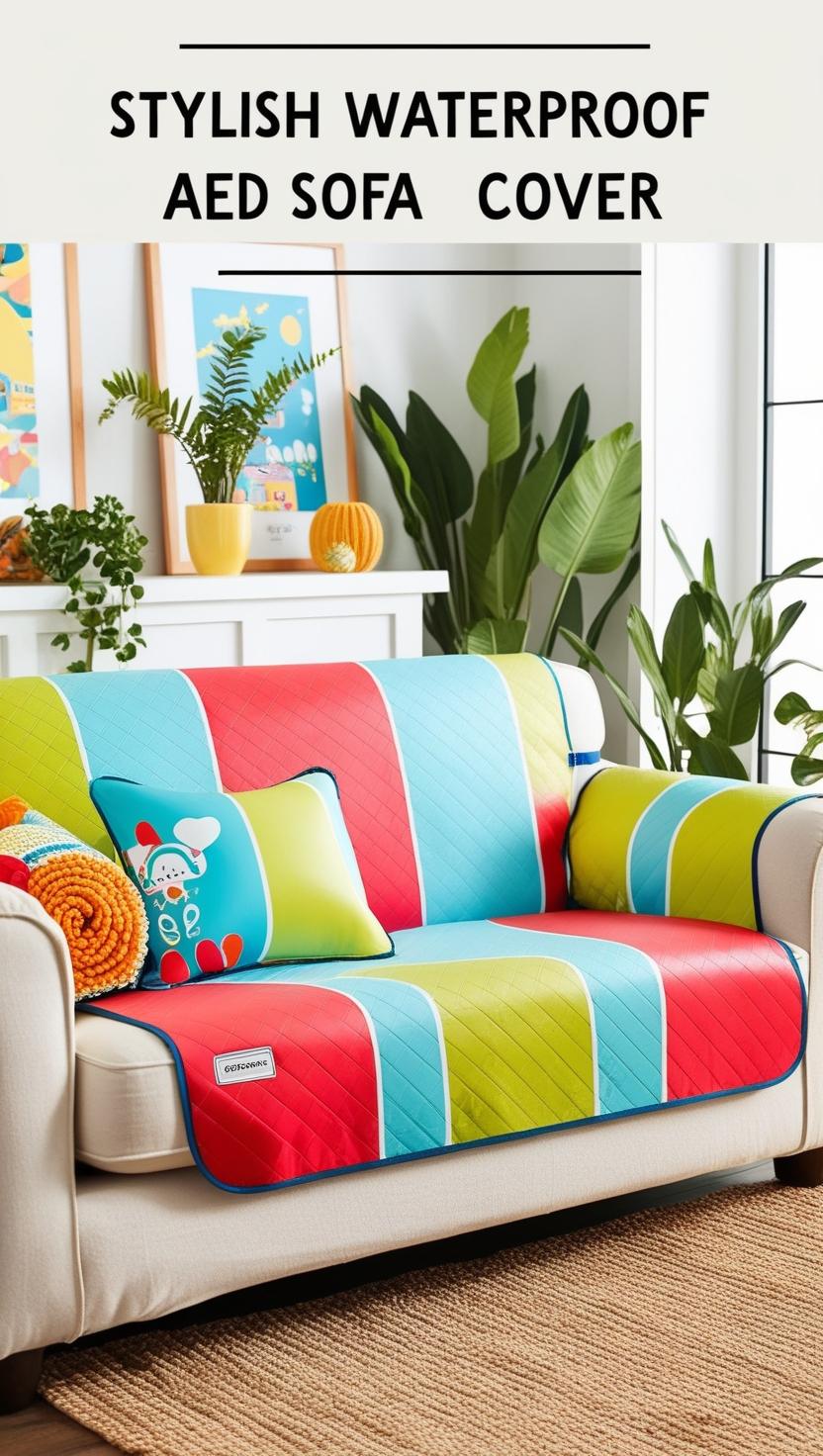
To Install a Waterproof Sofa Cover Like a Pro
To install a waterproof sofa cover:
To install a waterproof sofa cover, center the cover over your sofa, ensuring the back aligns with the sofa back, then carefully pull the fabric down to cover the seat and arms, tucking any excess fabric into the crevices between cushions and the sofa frame; for a secure fit, use the included straps or ties to fasten the cover around the legs or under the sofa, and adjust the fabric to smooth out any wrinkles
Key steps:
-
Center the cover:Position the sofa cover so the back section aligns with the sofa's back, ensuring it is centered.
-
Drape over the arms:Gently pull the fabric down from the back, covering the arms of the sofa.
-
Tuck excess fabric:Carefully tuck any extra material into the gaps between cushions and the sofa frame.
-
Secure with straps:If the cover has straps or ties, use them to fasten the cover around the sofa legs or under the seat to prevent slipping.
-
Adjust and smooth:Smooth out any wrinkles and ensure the cover is evenly distributed across the sofa.
-
Measure your sofa:Always choose a waterproof sofa cover that is the right size for your sofa to ensure a proper fit.
-
Check for features:Some covers have additional features like elastic straps, Velcro, or anti-slip backing to help keep the cover in place.
-
Separate cushions:If your sofa has separate cushions, cover each cushion individually for a better fit.
-
Care instructions:Follow the manufacturer's cleaning instructions for your specific waterproof sofa cover.
Before You Begin
Choosing the Right Cover
Before you start, it's crucial to choose the right cover for your needs and sofa type. Consider the following:
Material:
Type of sofa covers:
Stretch covers:
Quilted covers:
Fitted covers:
One-piece slipcovers
- Material: Microfiber, faux leather, performance fabrics, cotton blends
Two-piece slipcovers
- Material: Microfiber, faux leather, performance fabrics, cotton blends
Sectional sofa covers
- Material: Microfiber, faux leather, performance fabrics, cotton blends
Waterproof couch cushion covers
- Material: Microfiber, faux leather, performance fabrics, cotton blends
Discover the Best Sofa Cover Materials and Their Benefits
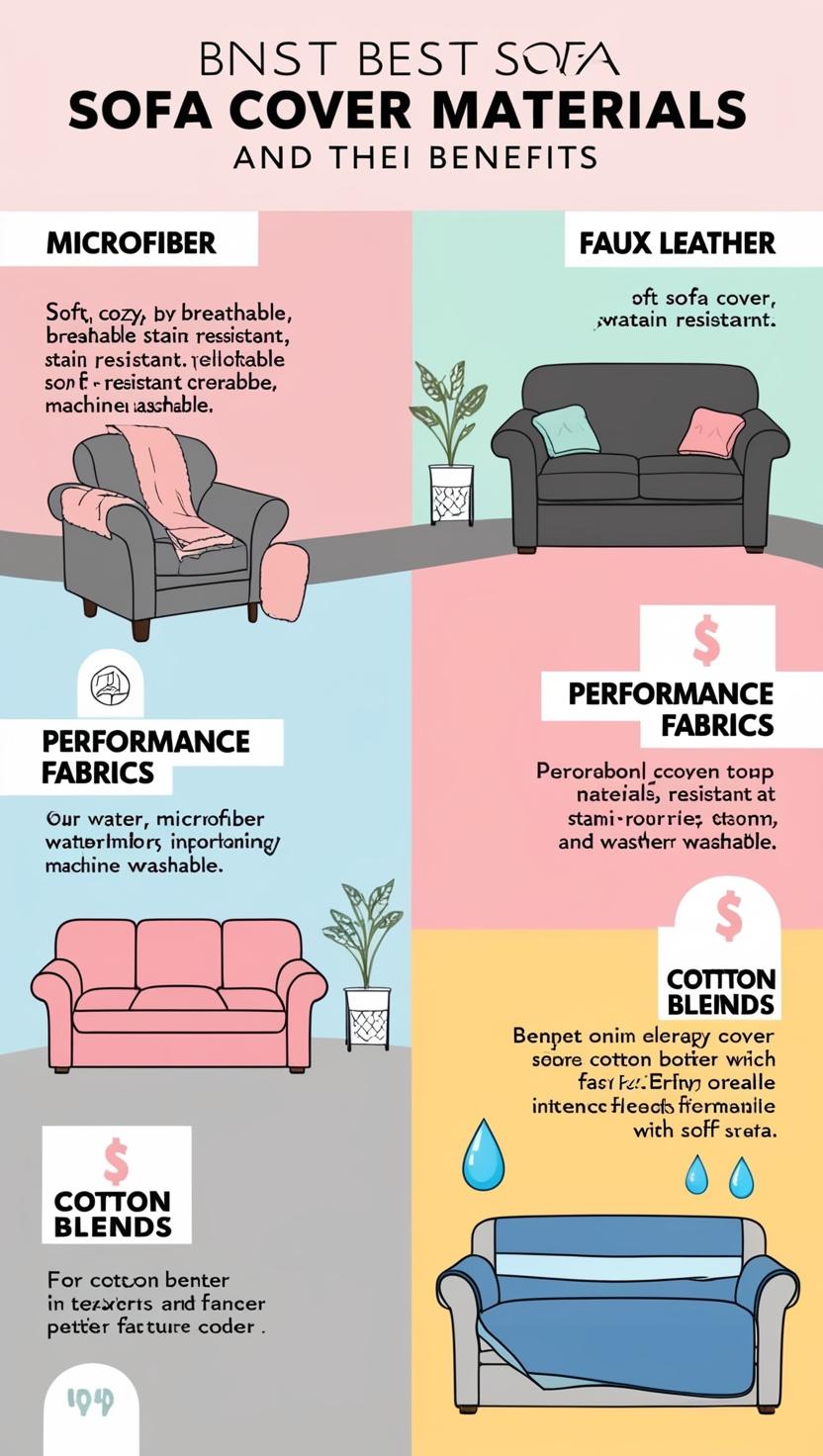
Microfiber:
Faux leather:
Performance fabrics:
Cotton blends:
Sofa covers Features:
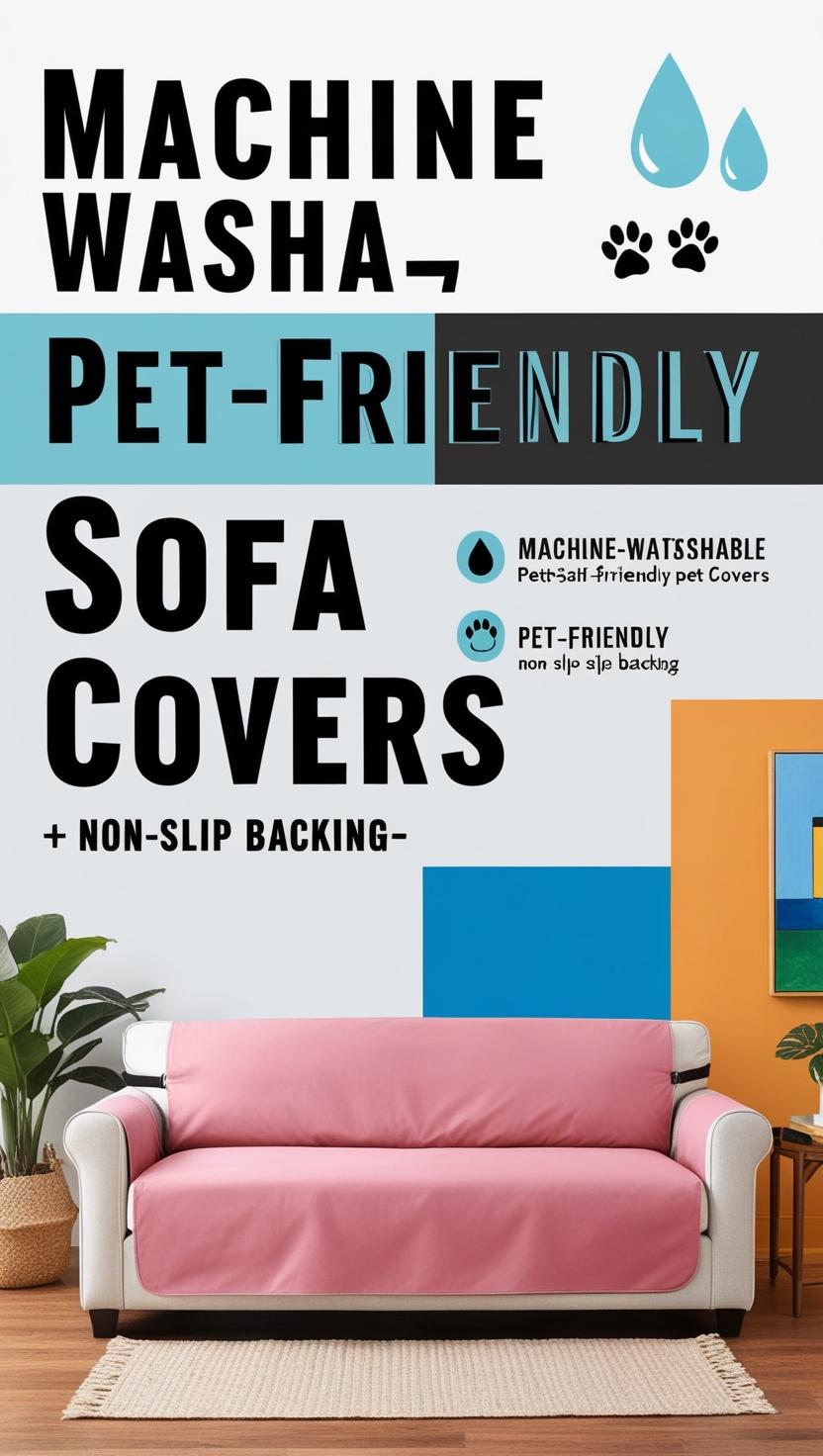
Machine-washable:
Pet-friendly:
Non-slip backing:
Measuring Your Sofa
Accurate measurements are essential for a proper fit. Use a flexible measuring tape to measure the following:
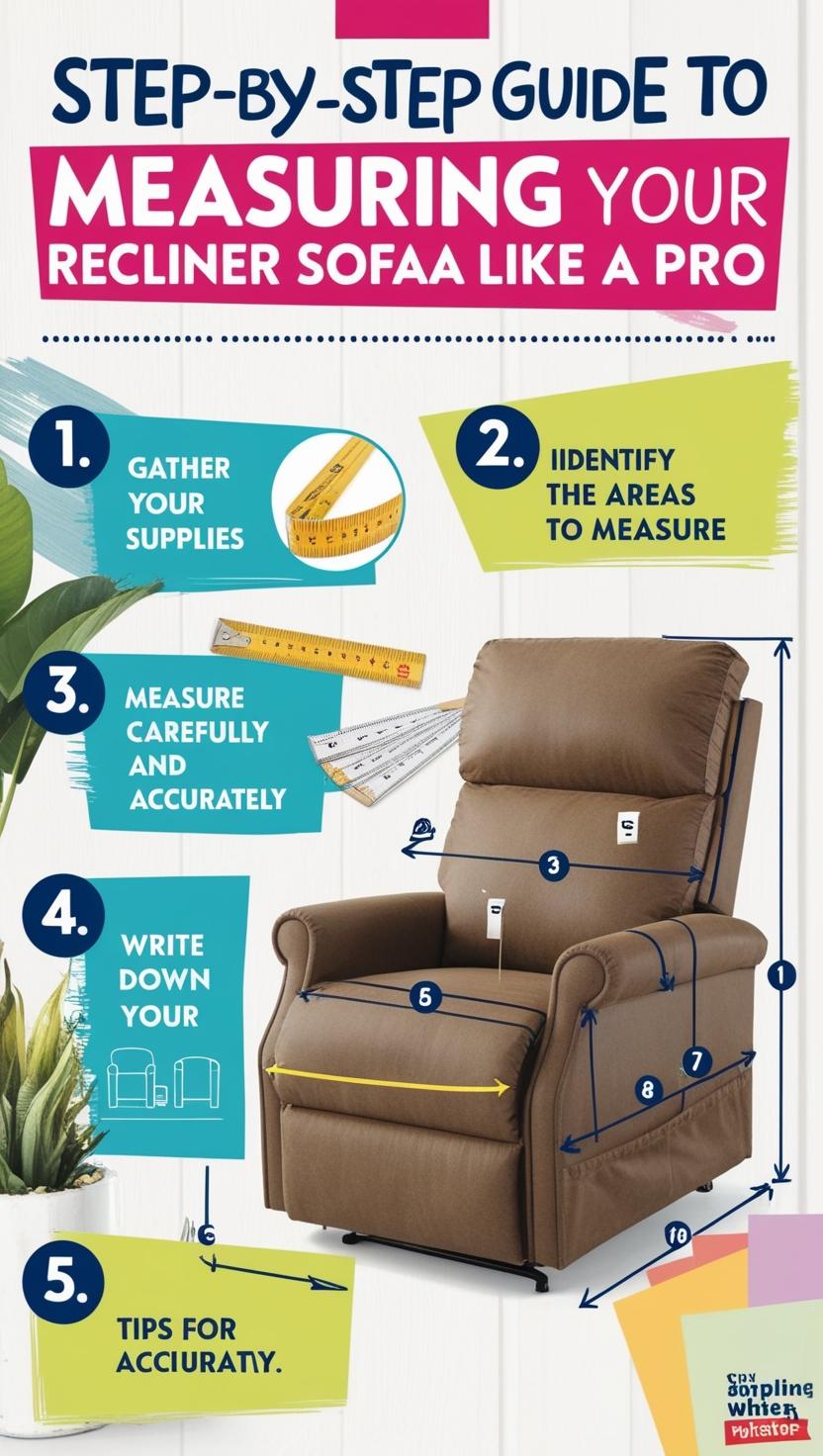
1. Sofa Width:
2. Sofa Depth:
3. Sofa Height:
4. Armrest Height:
Taking these preparatory steps might seem a little tedious, but they'll make the actual installation process so much easier. Plus, they'll ensure that you end up with a waterproof sofa cover that fits perfectly, looks great, and provides the protection you need. So, gather your supplies, take accurate measurements, and let's get ready to transform your sofa!
Pro Tip for sofa measurement:
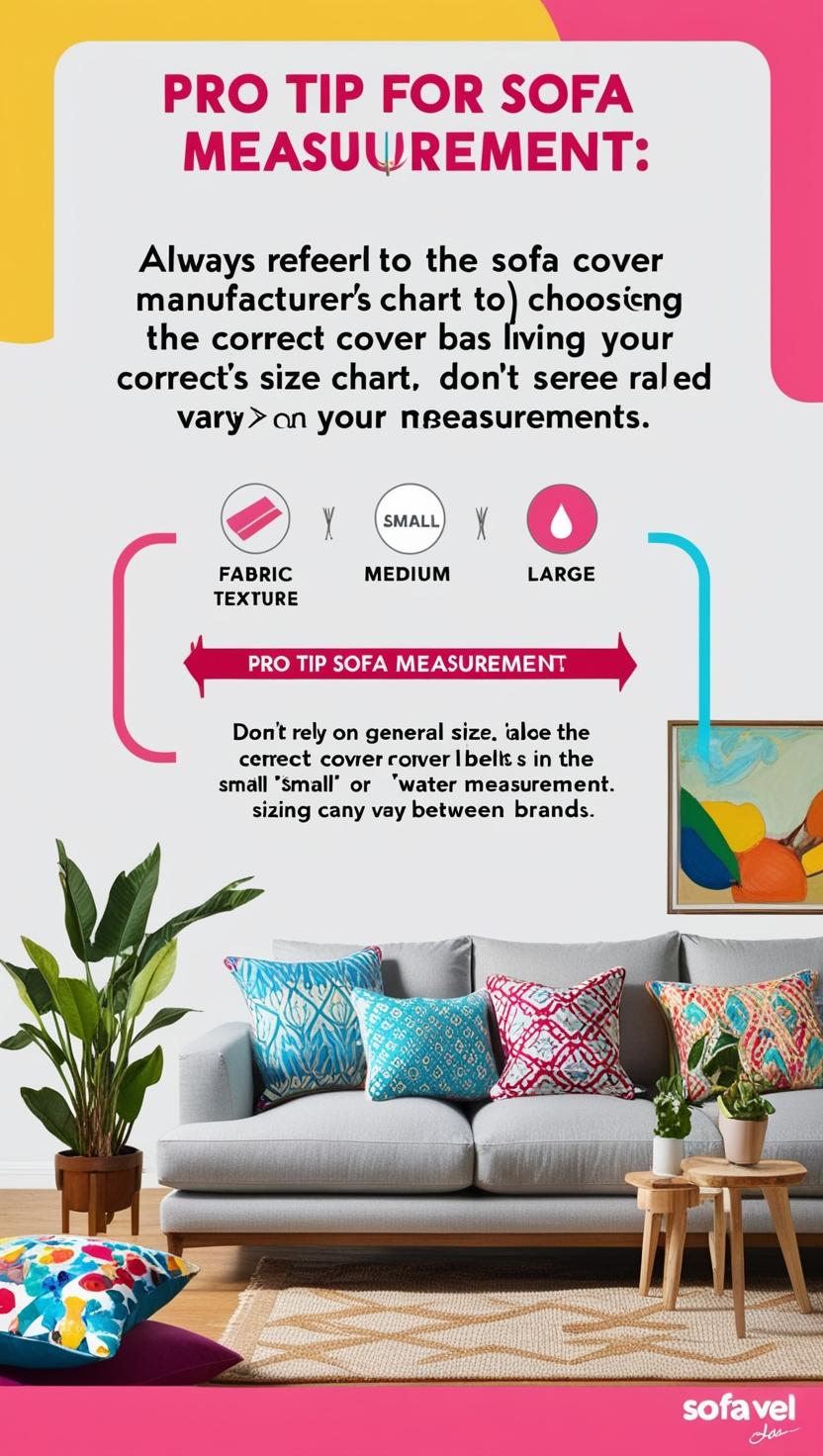
Always refer to the sofa cover manufacturer's size chart to choose the correct cover based on your measurements. Don't rely on general size labels like "small," "medium," or "large," as sizing can vary between brands .
Step-by-Step Installation Guide
1. Prepare Your Sofa:
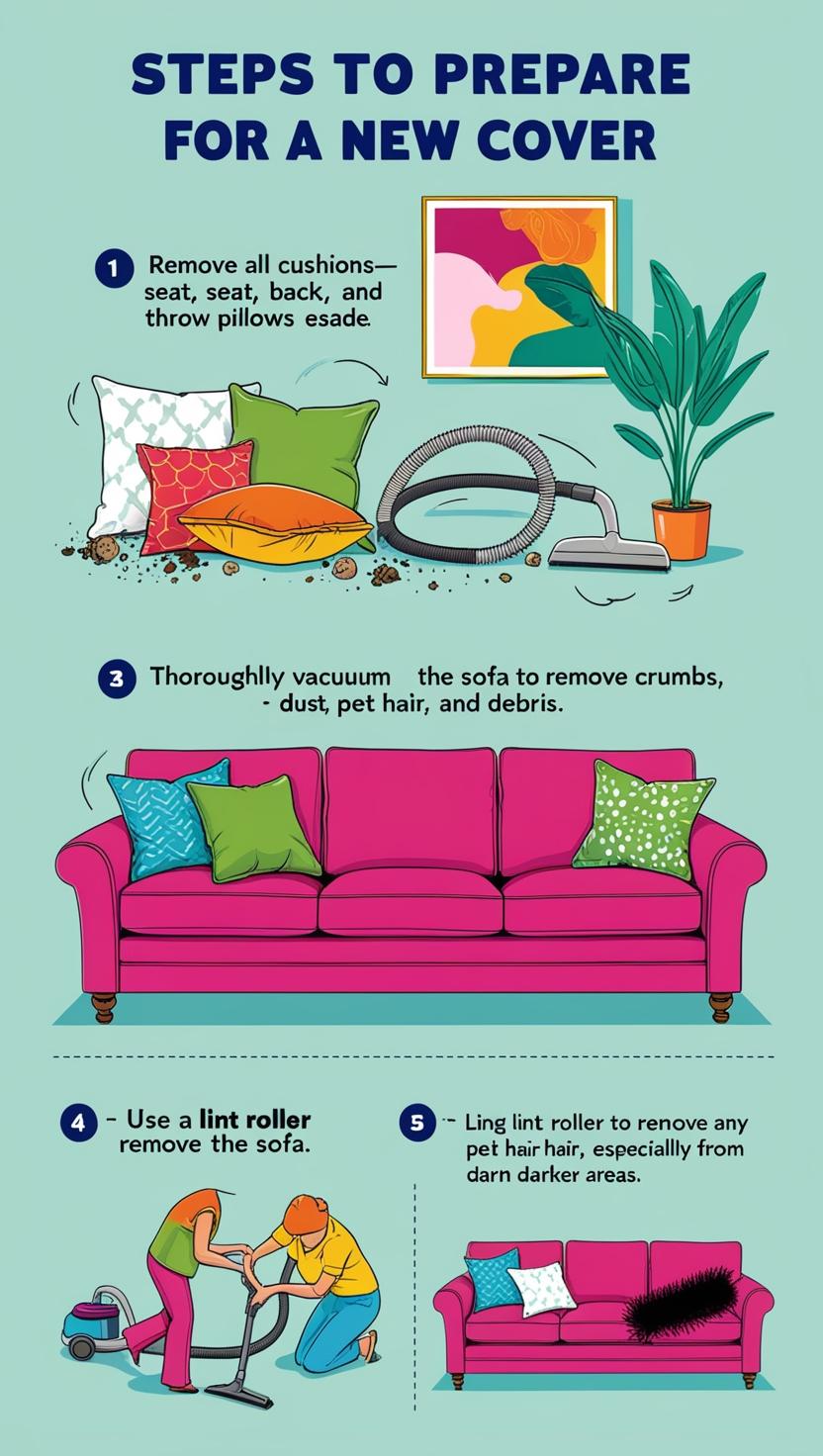
- Remove Cushions: Take out all removable cushions, including seat cushions, back cushions, and any throw pillows. This will make it much easier to tuck and smooth the cover. Set them aside for now.
- Vacuum: Give your sofa a thorough vacuuming to remove any crumbs, dust, pet hair, or other debris. You want a clean surface for your new cover. This will also help to ensure a smoother fit.
- Lint Roll: If you have pets, use a lint roller to remove any stubborn pet hair that the vacuum might have missed. This is especially important for darker-colored covers.
2. Identify the Cover's Orientation:

- Find the "Back" Tag: Most sofa covers have a tag or label sewn into one of the seams that indicates the back of the cover. This is your starting point. Locate this tag before you do anything else.
- Orient Yourself: Make sure you understand which part of the cover is the top, bottom, front, and back before you start draping it over your sofa.
3. Drape and Align the Cover:
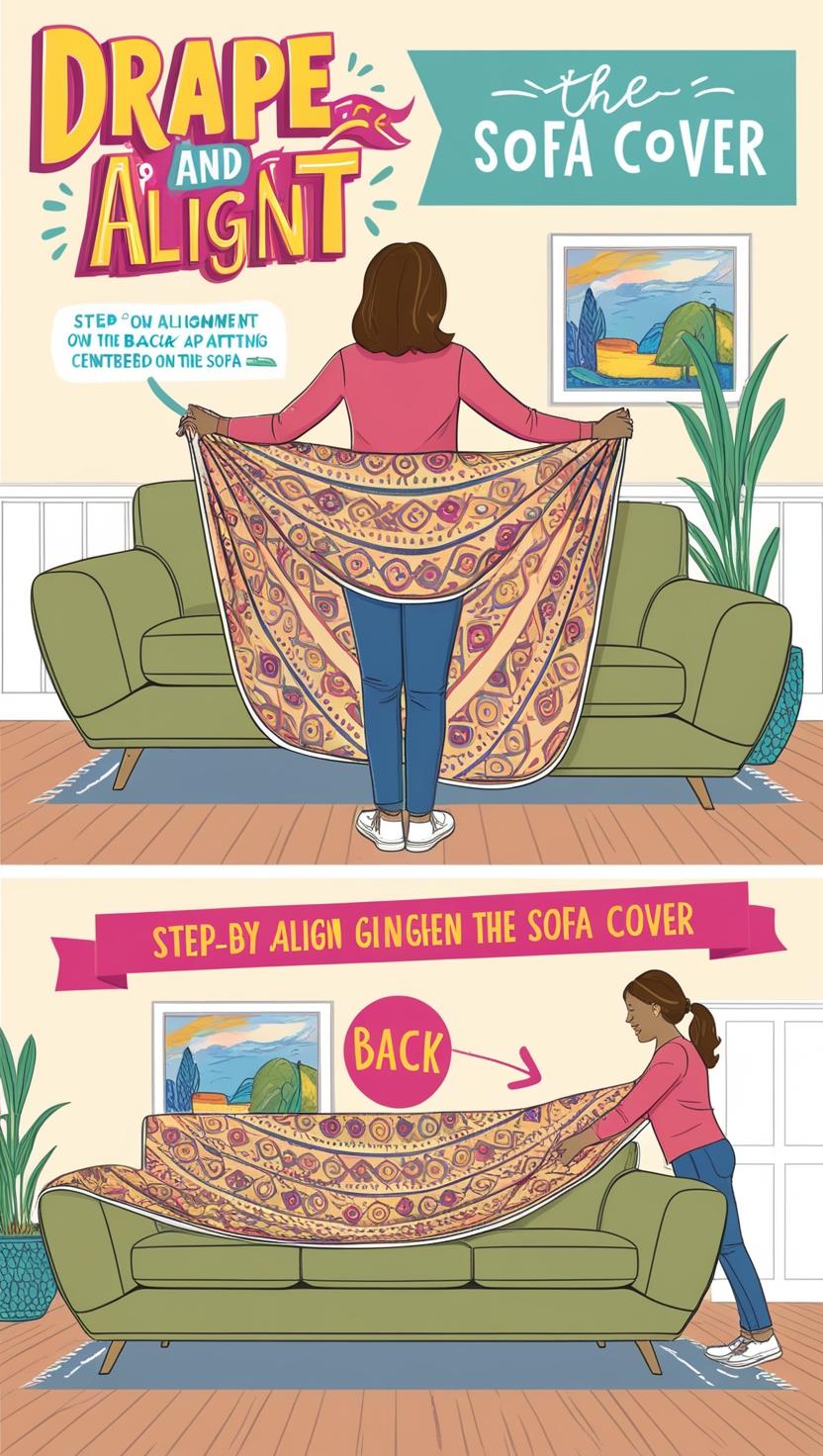
- Start at the Back: Stand behind your sofa and drape the cover over the back, aligning the "back" tag with the center of the sofa's back.
- Evenly Distribute: Make sure the cover is evenly distributed across the back of the sofa, with equal amounts of fabric hanging down on each side. You may need to adjust it a few times to get it centered.
4. Secure the Arms:
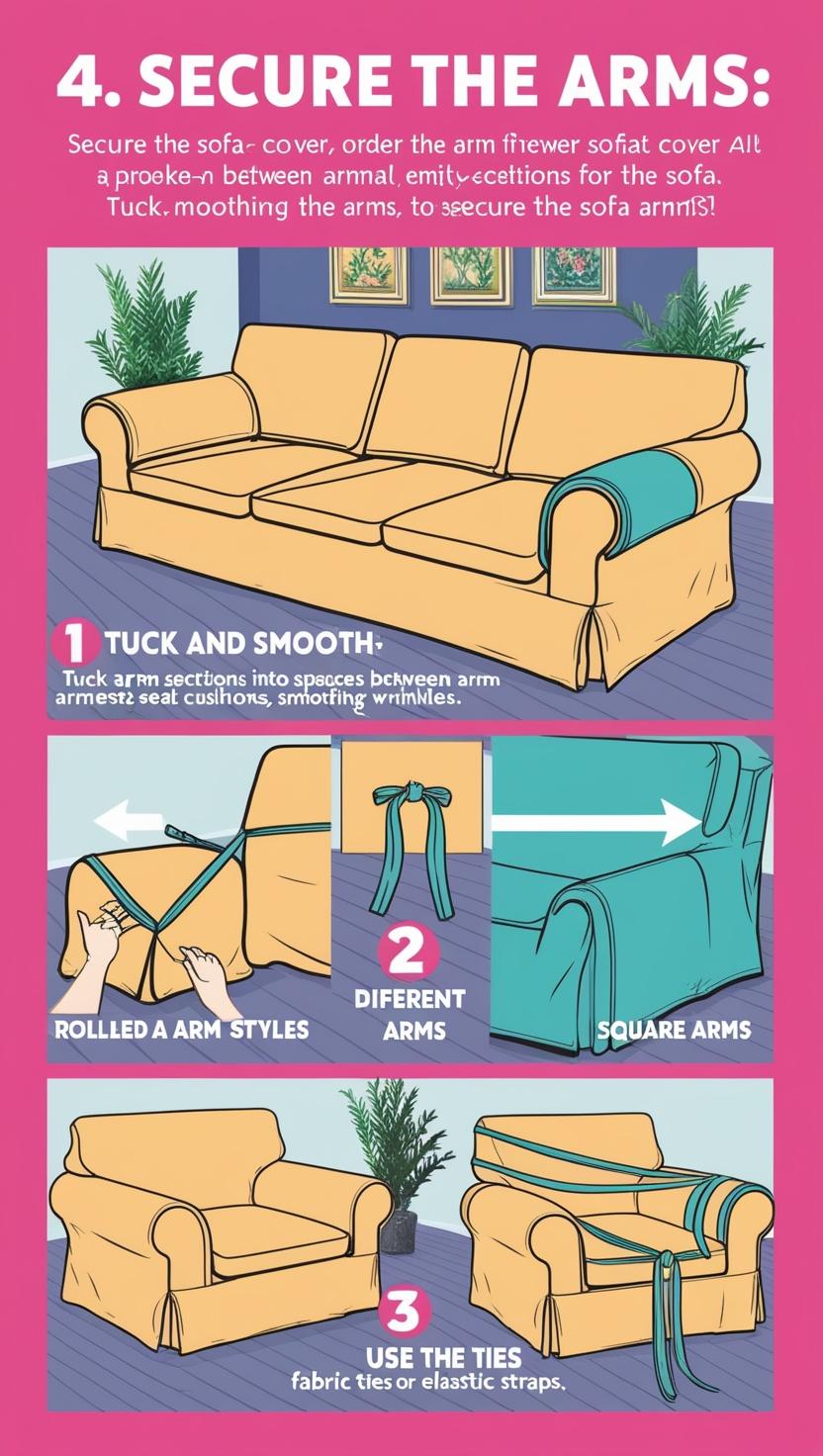
- Tuck and Smooth: Tuck the arm sections of the cover into the spaces between the armrests and the seat cushions. Smooth out any wrinkles or bunching as you go.
- Different Arm Styles:
- Rolled Arms: You'll likely need to do more tucking and smoothing to get a snug fit around the curves.
- Square Arms: These are generally easier to cover, but make sure the corners are tucked in neatly.
- Use the Ties: Many covers have fabric ties or elastic straps on the inside of the arm sections. Tie these together or fasten them as instructed to help keep the arms in place.
5. Tuck and Smooth the Fabric:
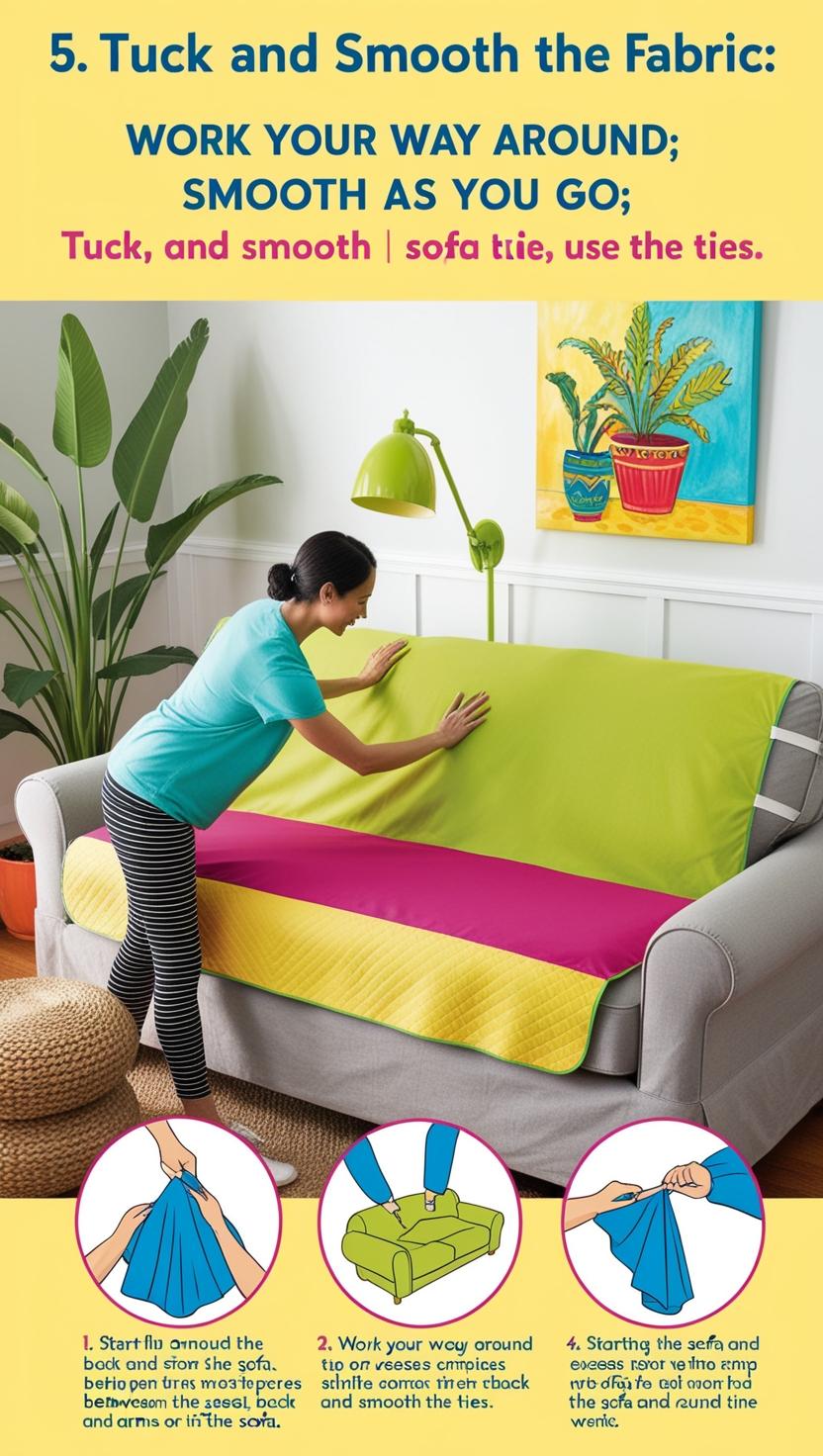
- Work Your Way Around: Starting from the back, work your way around the sofa, tucking the excess fabric deeply into the crevices between the seat, back, and arms.
- Smooth as You Go: Use your hands to smooth out any wrinkles or bunching. The goal is to get a nice, taut fit that conforms to the shape of your sofa.
6. Utilize Installation Aids:
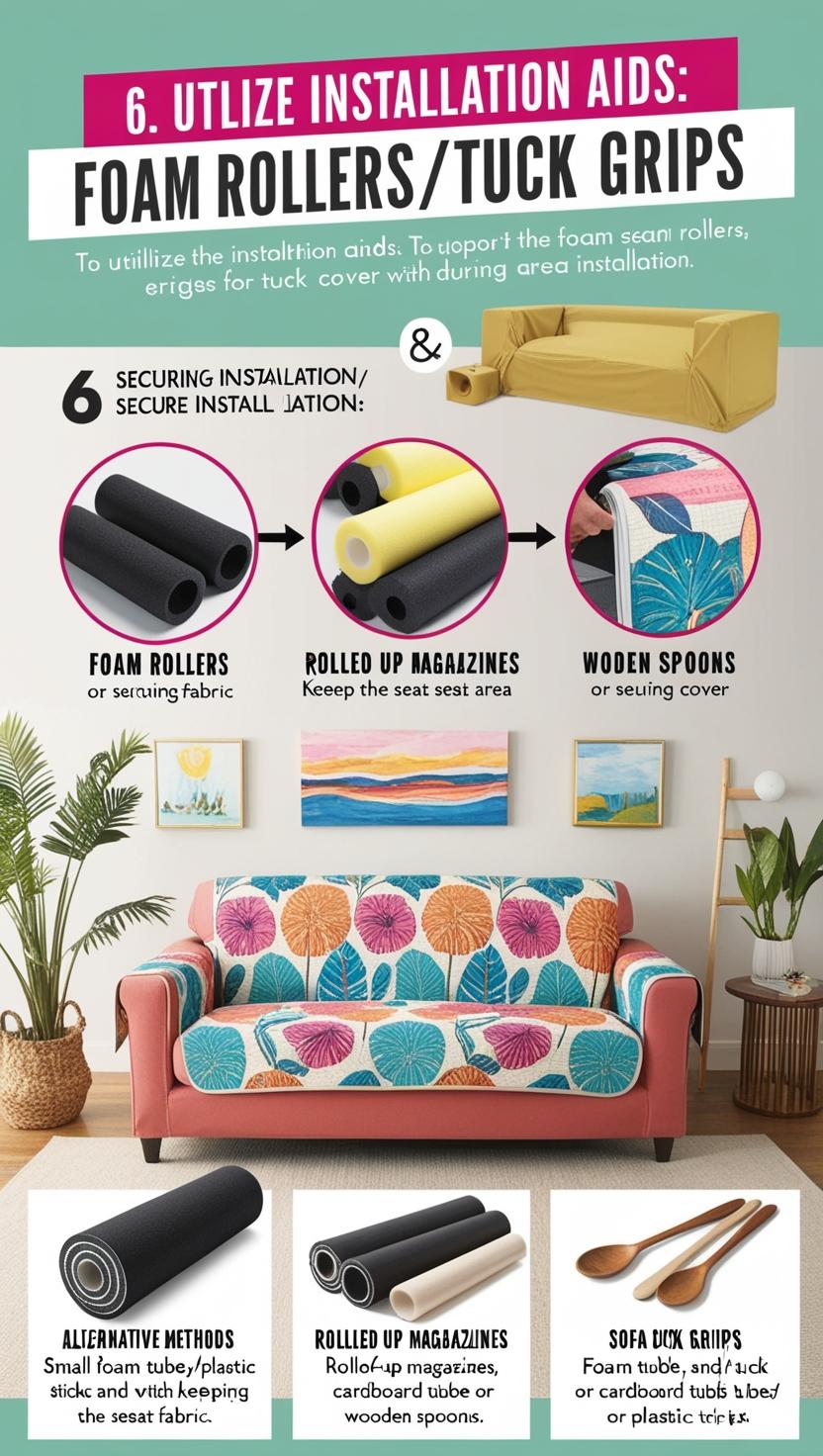
- Foam Rollers/Tuck Grips: If your cover came with foam rollers or tuck grips (they often look like little foam tubes or plastic sticks), now's the time to use them. Insert them into the crevices where you've tucked the fabric to help hold the cover in place and prevent it from slipping. These are especially helpful for keeping the seat area taut.
- Alternative Methods: If you don't have foam rollers, you can use rolled-up magazines, cardboard tubes, or even wooden spoons to help tuck the fabric deep into the creases.
7. Replace the Cushions:
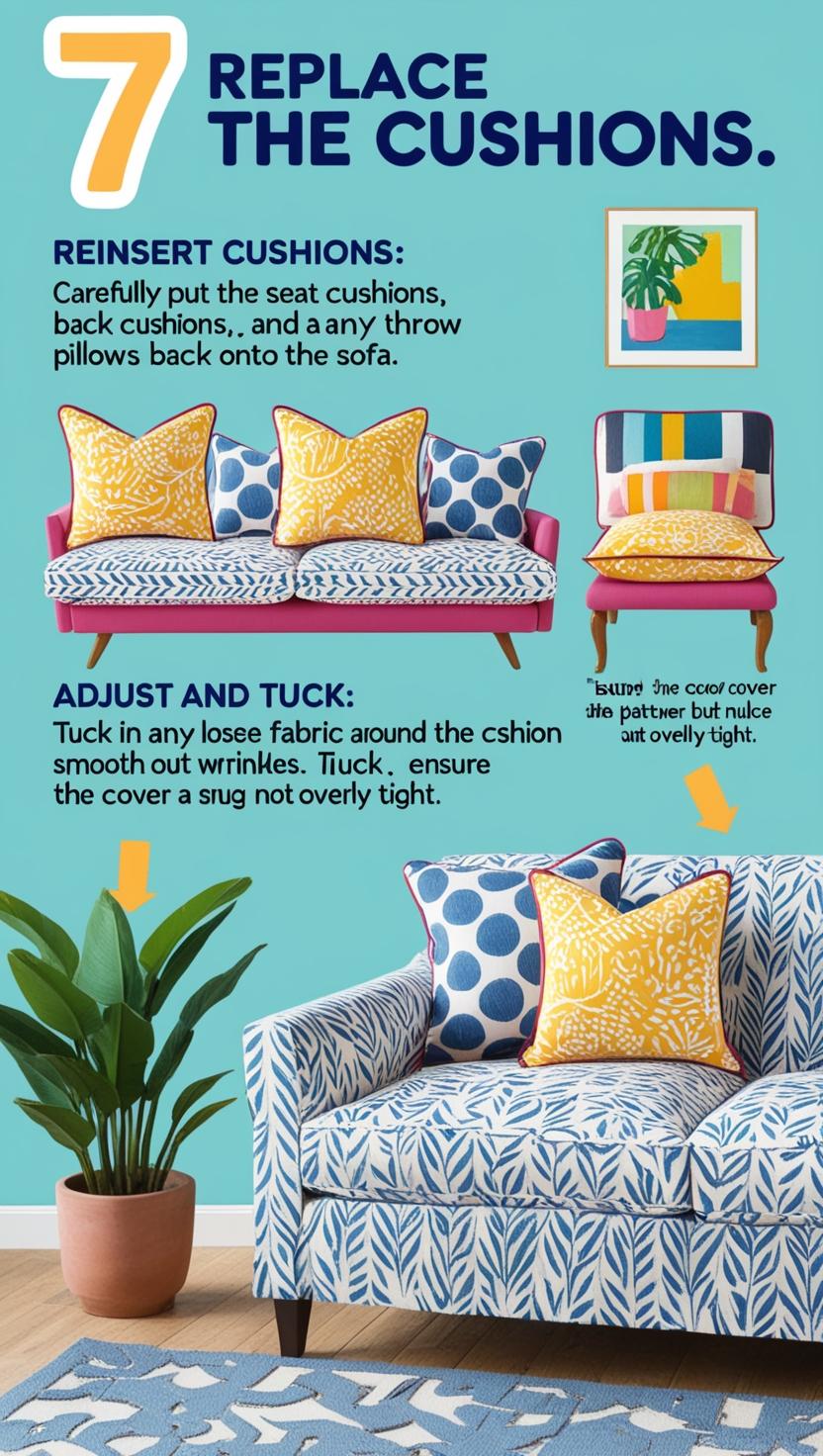
- Reinsert Cushions: Carefully put the seat cushions, back cushions, and any throw pillows back onto the sofa.
- Adjust and Tuck: As you replace the cushions, you'll likely need to make some final adjustments to the cover. Tuck in any loose fabric around the cushions and smooth out any remaining wrinkles. Make sure the cover is snug but not overly tight, allowing the cushions to settle naturally.
Tips for a Professional Fit
You've followed the step-by-step guide, but you're still looking for that extra something to give your sofa cover installation a professional touch? Here are some insider tips to help you achieve a flawless, snug, and stylish fit:
Enlist a Helper: Installing a sofa cover, especially on a larger sofa or sectional, can be easier with an extra pair of hands . One person can hold the cover in place while the other tucks and smooths
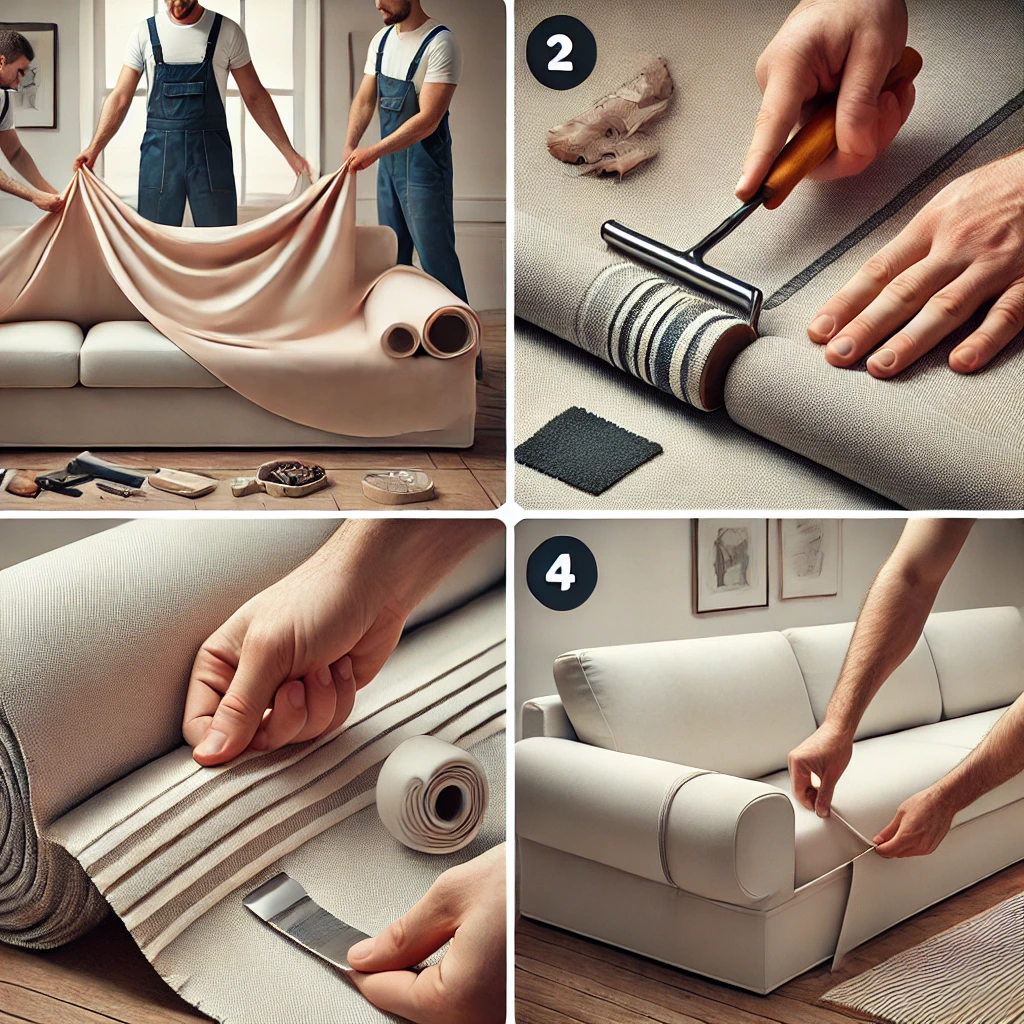
Tuck Deeply and Evenly: Don't be shy about tucking that fabric deep into the crevices of your sofa. The deeper you tuck, the more secure the cover will be, and the less likely it is to slip or bunch up. Use your hands, or try a wooden spoon, spatula, or those handy foam rollers that often come with covers. Make sure to tuck evenly around the entire sofa for a uniform look.
Use Extra Tools: Those foam rollers (or tuck grips) are your best friends when it comes to getting a professional-looking fit. They help to anchor the cover in place and prevent it from shifting. If your cover didn't come with them, you can find them online or at most home goods stores. Alternatively, you can use rolled-up magazines, cardboard tubes, or even pool noodles cut to size. Get creative with it!
Regular Adjustments: Even with the most meticulous installation, some minor shifting or bunching is normal, especially with heavy use. Make it a habit to check your cover periodically and make any necessary adjustments. A quick re-tuck here and there can make a big difference in maintaining a neat and professional appearance .
Troubleshooting Common Sofa Cover Installation Problems
Even the most experienced sofa-cover installers run into occasional snags. Here's how to troubleshoot some of the most common sofa cover installation problems:
Problem 1: Bunching or Wrinkling
The Issue:
Your sofa cover looks loose and baggy, with unsightly bunches or wrinkles, especially around the arms or cushions.
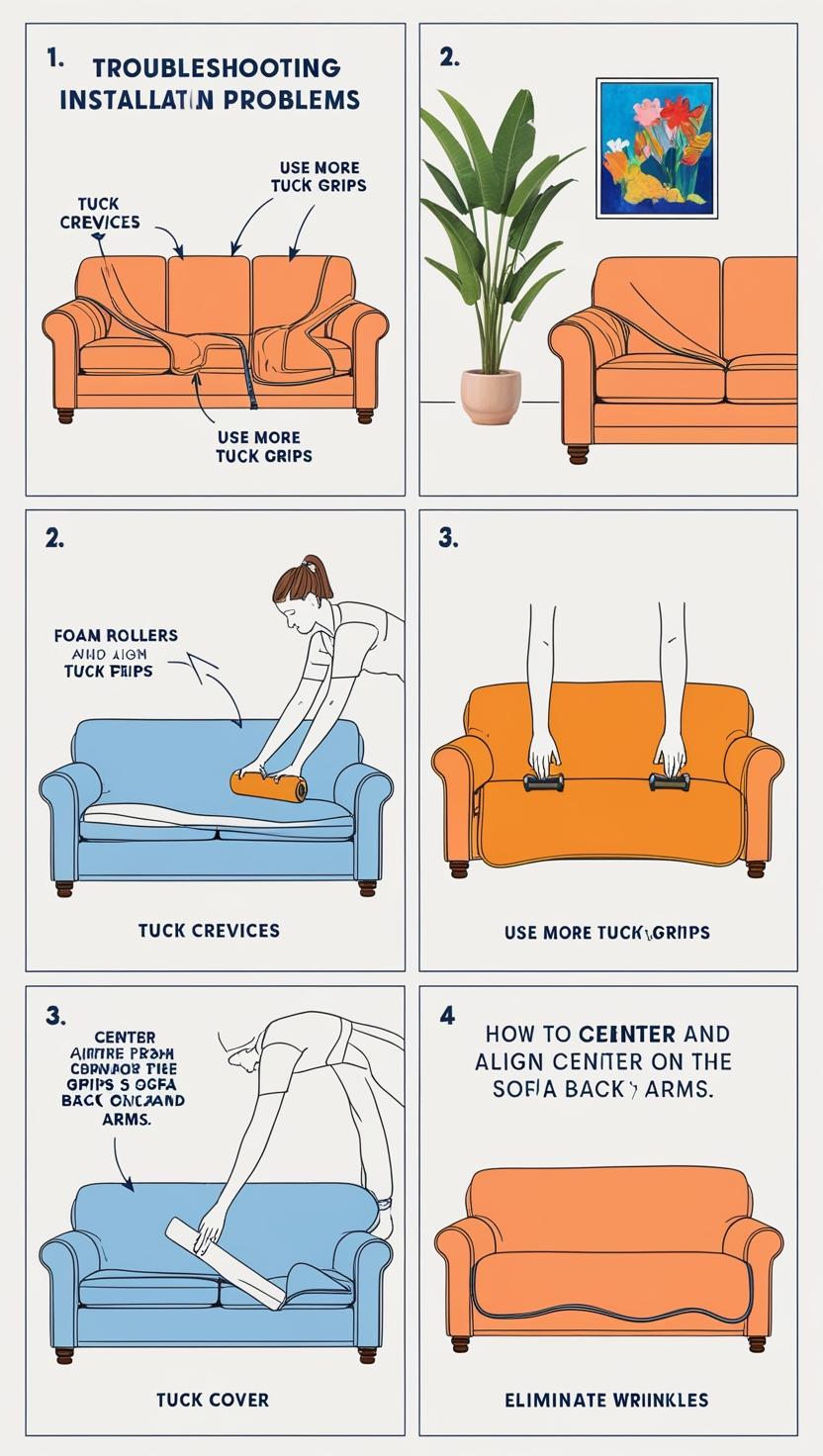
Solutions:
- Re-Tuck: The most common culprit is insufficient tucking. Try re-tucking the cover, making sure to push the fabric deep into the crevices of your sofa.
- Use More Tuck Grips: If you're already using foam rollers or tuck grips, try adding more. The more anchor points you have, the more secure the cover will be.
- Check Alignment: Make sure the cover is properly aligned with the back and arms of your sofa. If it's off-center, it can cause bunching.
- Smooth from the Center Out: When smoothing the cover, start in the center and work your way outwards towards the edges. This can help to prevent wrinkles.
Problem 2: Slipping or Sliding
The Issue:
Your sofa cover keeps slipping off, especially when you sit down or get up.
Solutions:
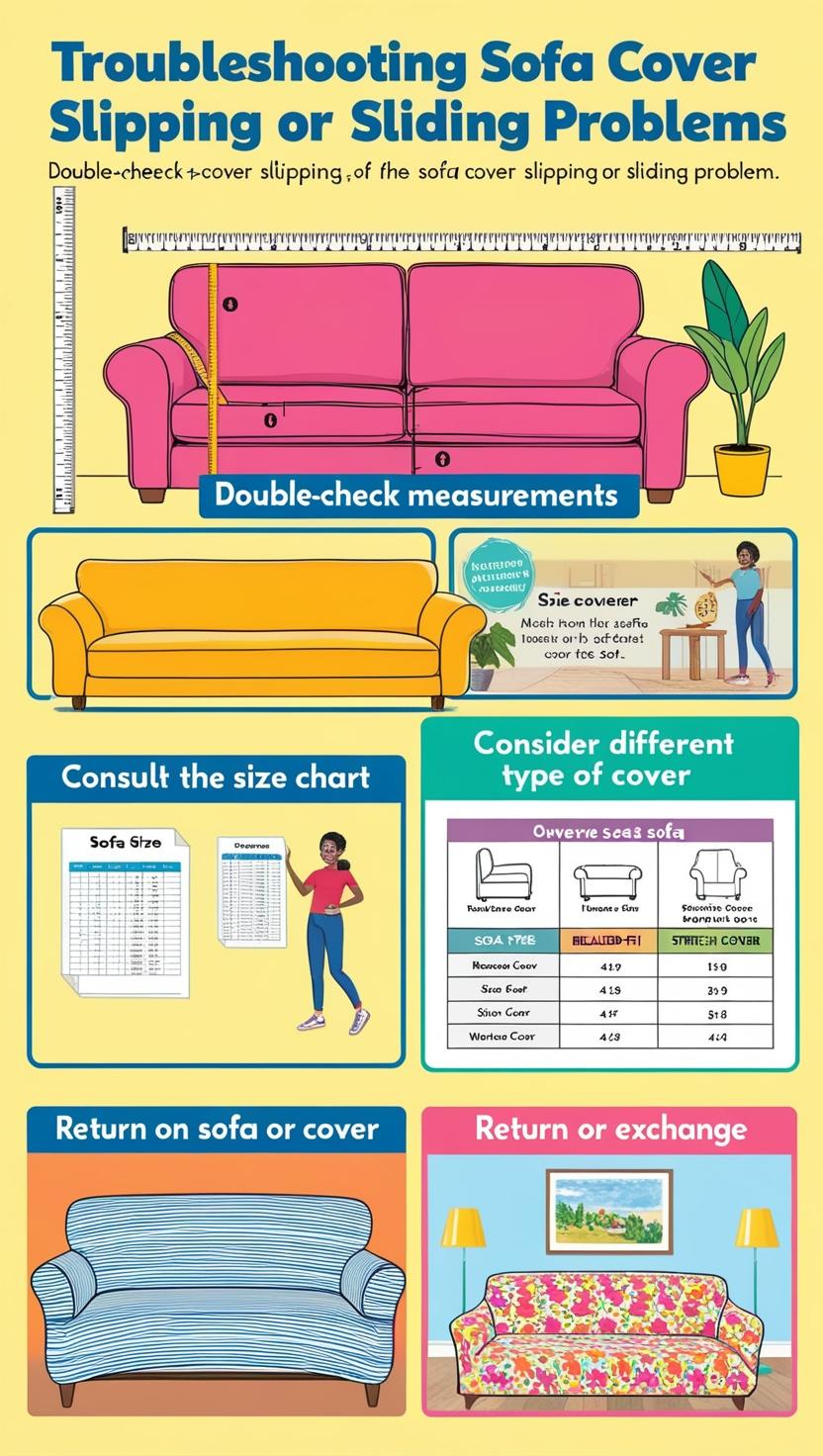
- Double-Check Measurements: Go back and measure your sofa again, carefully following the measuring guide. Compare your measurements to the manufacturer's size chart.
- Consult the Size Chart: Make sure you're looking at the correct size chart for your specific cover. Different brands may have different sizing.
- Consider a Different Type of Cover: If your sofa has an unusual shape or size, you might need to consider a different type of cover. For example, a relaxed-fit cover might work better for an oversized sofa than a stretch cover. Or, you might need a custom-made cover .
- Return or Exchange: If you've just purchased the cover, you may be able to return it or exchange it for a different size.
Problem 3: Ill-Fitting Cover
The Issue:
Your sofa cover is either too small or too large.
Solutions:
- Double-Check Measurements: Go back and measure your sofa again, carefully following the measuring guide. Compare your measurements to the manufacturer's size chart.
- Consult the Size Chart: Make sure you're looking at the correct size chart for your specific cover. Different brands may have different sizing.
- Consider a Different Type of Cover: If your sofa has an unusual shape or size, you might need to consider a different type of cover. For example, a relaxed-fit cover might work better for an oversized sofa than a stretch cover. Or, you might need a custom-made cover .
- Return or Exchange: If you've just purchased the cover, you may be able to return it or exchange it for a different size.
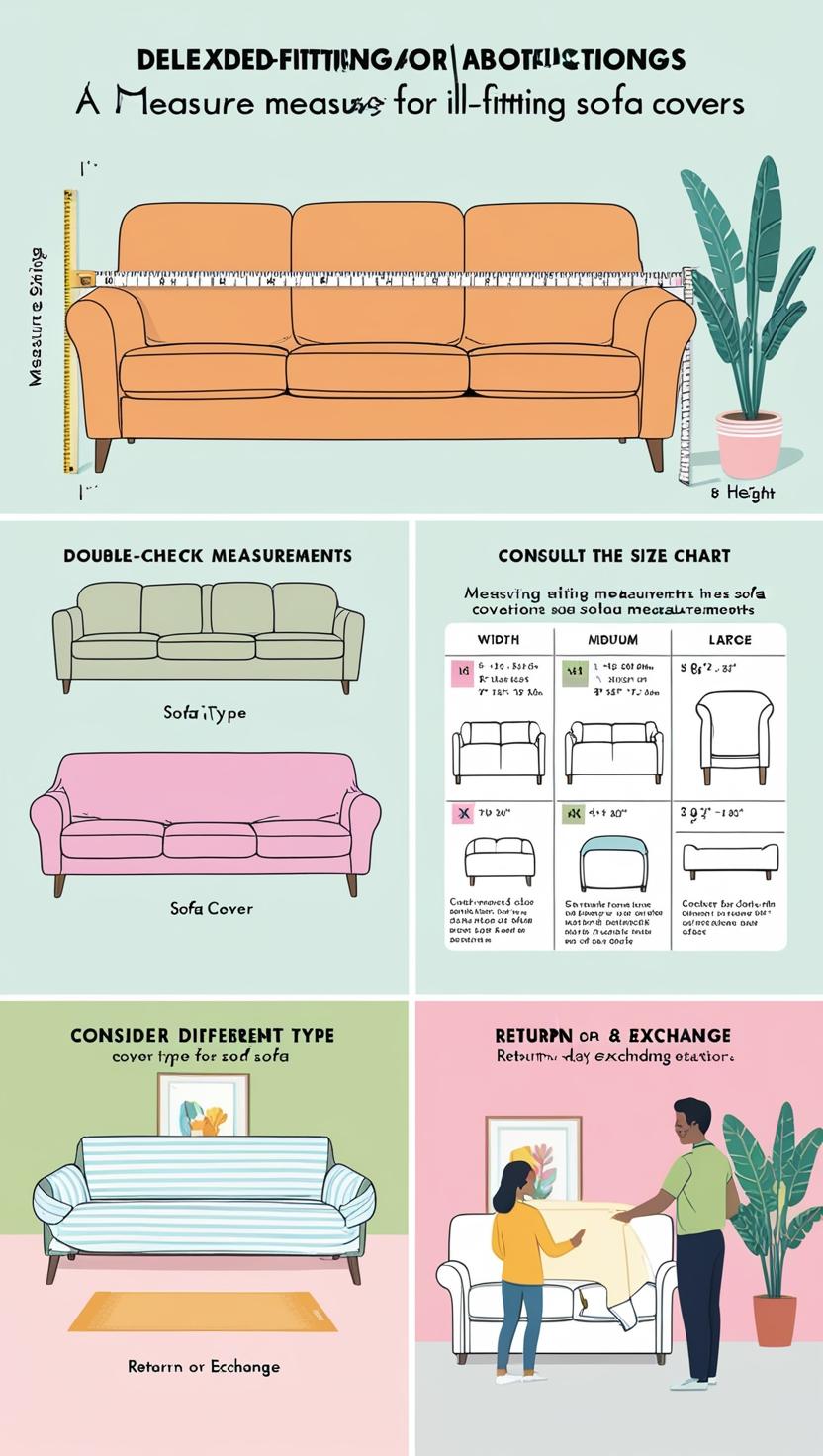
Installing Sofa Covers on Different Sofa Types
While the basic principles of installing a sofa cover are generally the same, certain sofa types require a few extra considerations. It's like baking - the basic recipe is similar, but you need to adjust it slightly for different types of cakes. Here's how to tackle the installation process for some common sofa styles:
1. installing Sectional Sofas Covers
The Challenge:
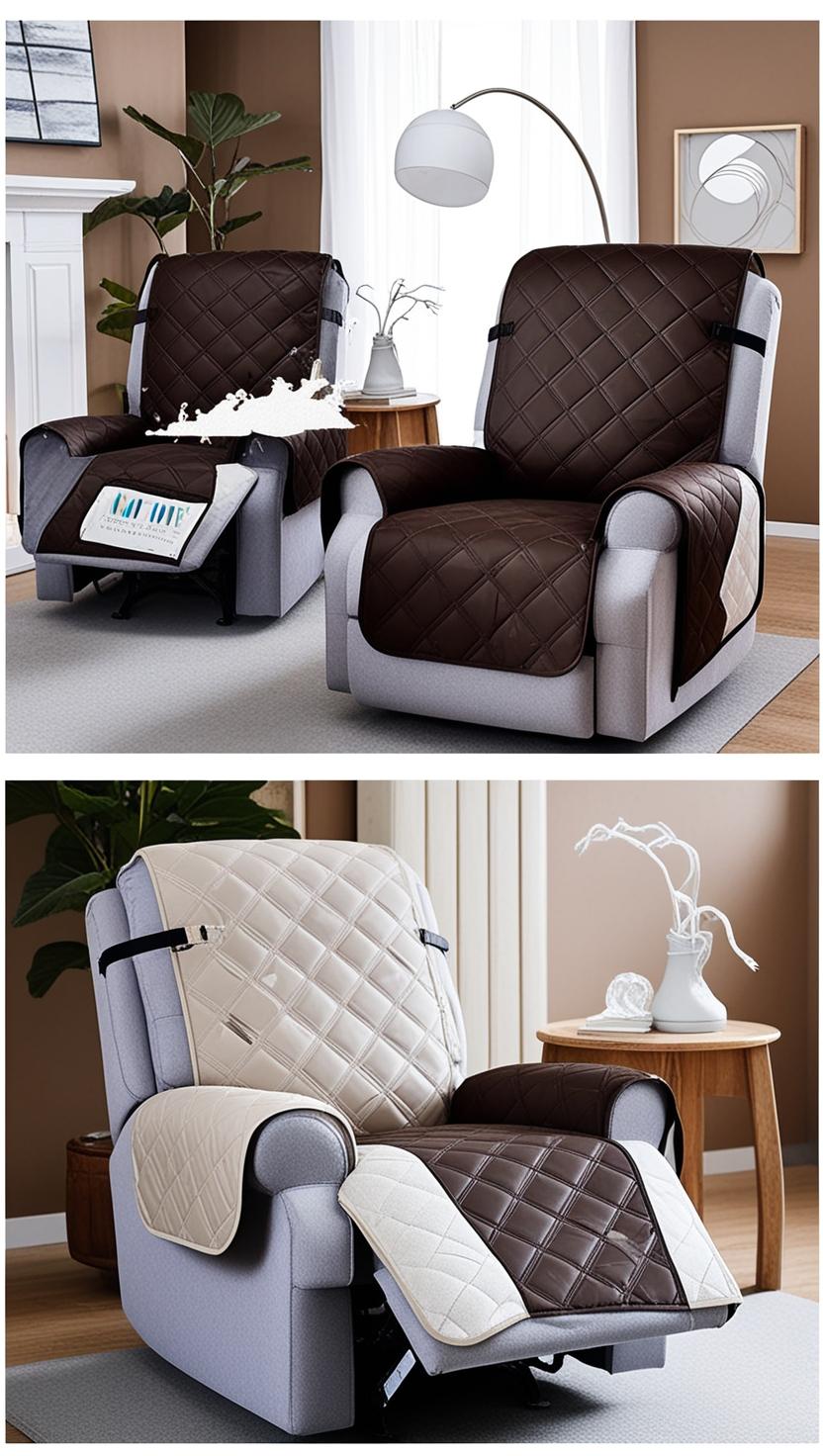
Sectionals, with their multiple pieces and often unique configurations (L-shaped, U-shaped, modular), can be tricky to cover.
The Solution:
- Measure Each Section Individually: Don't try to measure the entire sectional as one unit. Treat each piece as a separate sofa and measure it accordingly. This is very important to remember.
- Purchase Individual Covers: Most manufacturers offer covers specifically designed for sectional pieces (corner pieces, armless sections, chaises, etc.). You'll likely need to buy multiple covers to fit your entire sectional.
- Install Each Cover Separately: Follow the standard installation steps for each individual section, tucking and smoothing as you go.
- Secure the Connections: Pay special attention to the areas where the sectional pieces meet. Use extra tuck grips, straps, or even safety pins to secure the covers together and prevent gaps or slippage.
Consider the Chaise: If your sectional has a chaise, you may need a specialized chaise cover or extra fabric to tuck around it.
2. installing Recliner Sofas Covers
The Challenge:
Reclining mechanisms can make it difficult to keep a cover in place, especially when the sofa is reclined.
The Solution:
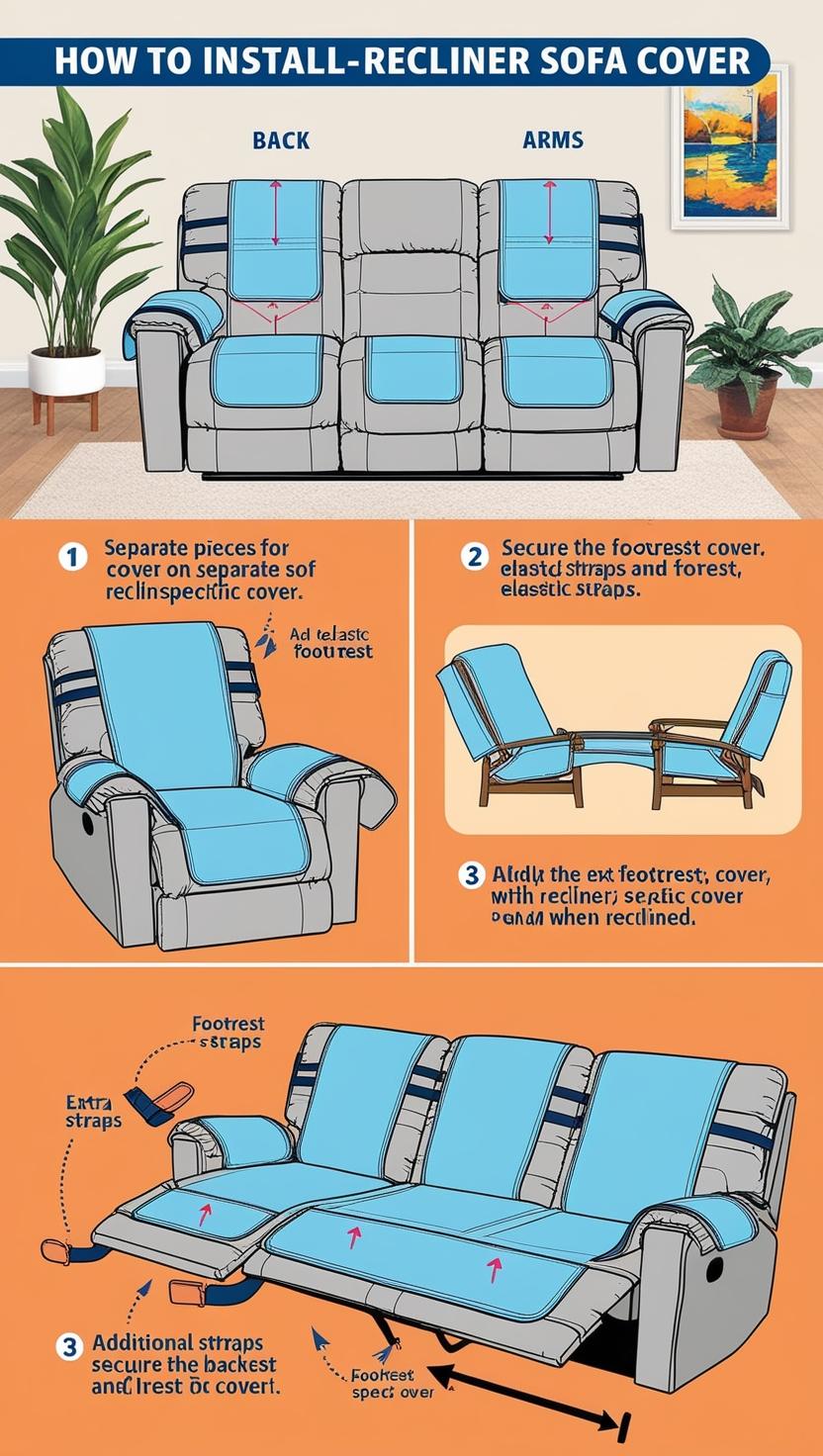
- Choose Recliner-Specific Covers: Look for covers that are specifically designed for recliners. These often have separate pieces for the back, seat, arms, and footrest, allowing the recliner to function properly.
- Secure the Footrest Cover: Make sure the footrest cover is securely attached and won't interfere with the reclining mechanism. Many recliner covers have elastic straps or ties for this purpose. It is important that it is secure.
- Use Extra Straps: Consider adding extra straps or ties around the back and under the footrest to keep the cover in place when reclining.
3. installing Loveseat Recliners Sofas Covers.
The Challenge:
Covering two reclining sections in one piece of furniture requires careful attention to both fit and functionality. These can be tricky.
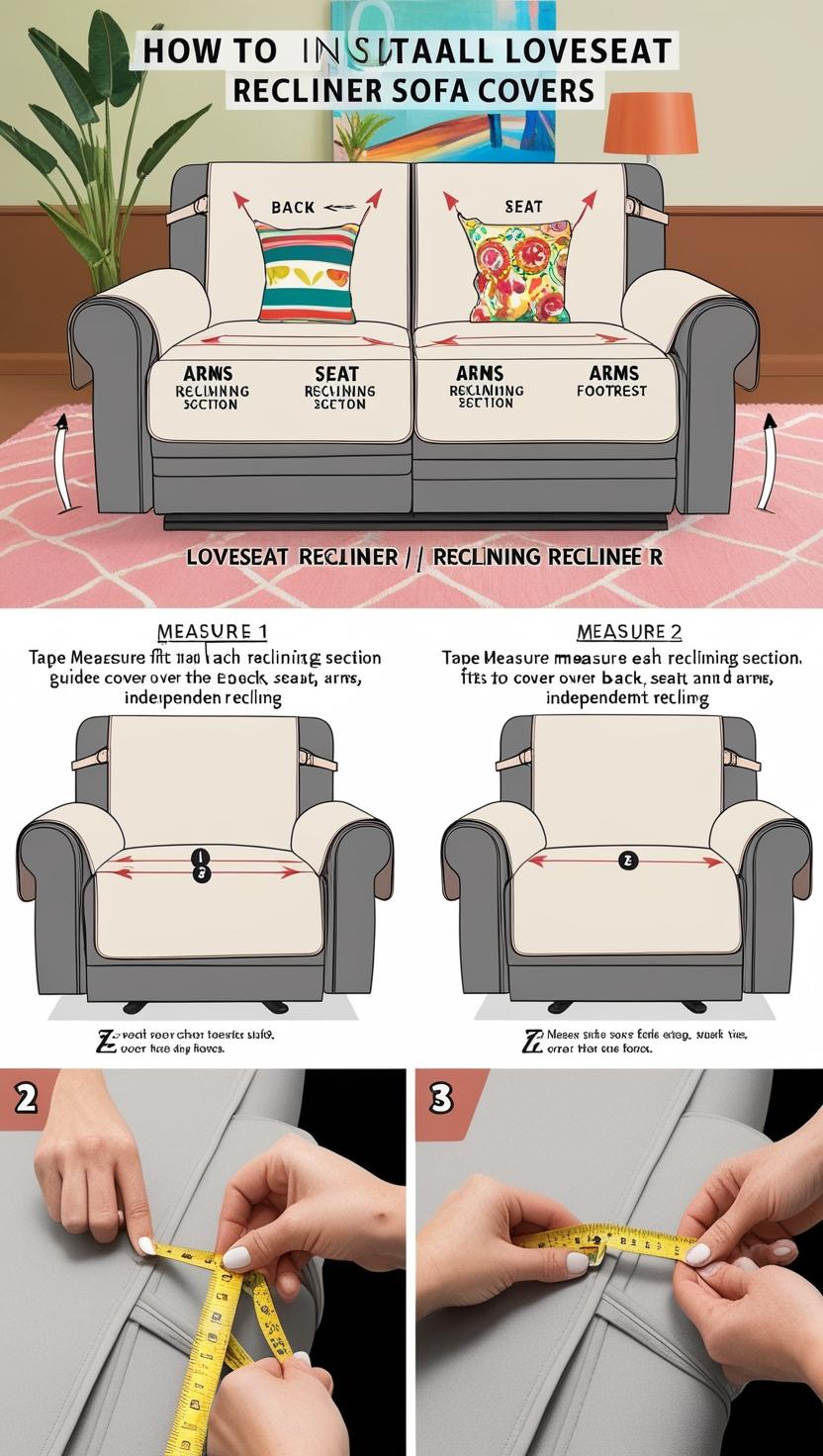
The Solution:
- Look for covers designed for loveseat recliners: These usually come as two separate pieces that allow each side to recline independently.
- Measure Each Side Individually: Just like with sectionals, treat each reclining portion as a separate unit for measuring. This will ensure you get the correct size.
- Secure Each Cover: Install each cover separately, paying close attention to tucking and securing mechanisms.
General Tips for All Sofa Types:
Read the Instructions:
Always refer to the manufacturer's instructions for your specific cover. They may have additional tips or recommendations.
Watch Videos:
If you're a visual learner, search for video tutorials online. Many brands and individuals offer helpful installation guides on YouTube. I have found these to be very helpful.
Don't Be Afraid to Experiment:
Every sofa is different, so it might take a little trial and error to find the perfect installation technique for your specific cover and sofa.
Conclusion:
Installing a waterproof sofa cover is a simple and effective way to protect your furniture and enhance the look of your living room. By following the steps and tips outlined in this guide, you can ensure a proper fit and enjoy the benefits of a waterproof cover for years to come.
Remember to choose the right type of cover for your sofa and consider the material that best suits your needs and lifestyle. Proper installation and regular maintenance are crucial for maximizing the lifespan of your cover and keeping your sofa looking its best.


